This week took us back in time, brought us to the deserts, and tested our skills at tire changing. Crossing Morocco has been a great pleasure and we’re not done yet. But let’s begin where we ended on our last weeks’ blog.
OLD CITIES
Our first stop was in Moulay Idriss, the holy city of Morocco and its most important center for pilgrims. It is claimed, that 3-7 pilgrimages to Moulay Idriss have the same effect as a Hadsch to Mecca, which is challenged by other Muslims. It was founded by Moulay Idriss – at the same time the first emperor who unified the different tribes in Morocco and therefore admired as the founder of the first Moroccan empire. We enjoyed tea at the main place and later some views from the terraces as non-muslims are not allowed to enter the mosque. Navigating the city wasn’t easy as none of the minor roads are on any maps. Afterwards, we drove on to Volubilis – an even older city but from a bit different heritage. It’s the most important Roman ruins in Morocco and famous for its mosaics that are in very well condition. The UNESCO protected remains give a good idea of the former city. According to our guide book, it’s still seldomly visited by Morrocans themselves as it is deemed prior to the age of Islamic enlightenment and therefore uninteresting. While walking across the wide area the temperatures got quite hot and we treated ourselves to some ice cream. Overnight, we stayed at the remote Lake Sidri. A picturesque sea surrounded by mars like red rocks. At least the part where we parked is being heavily fished with big nets. As a result, the fishing attempts of Thierry were in vain and all he brought back to the camper was muddy legs and a smile. Once the moon rose the landscape felt even more like in outer space but planet earth never showed up in the night sky. Even though a local fisherman told us that it’s not safe to sleep here we trusted on the reviews from previous travellers (using the Park4Night app) and had a wonderful, undisturbed night.
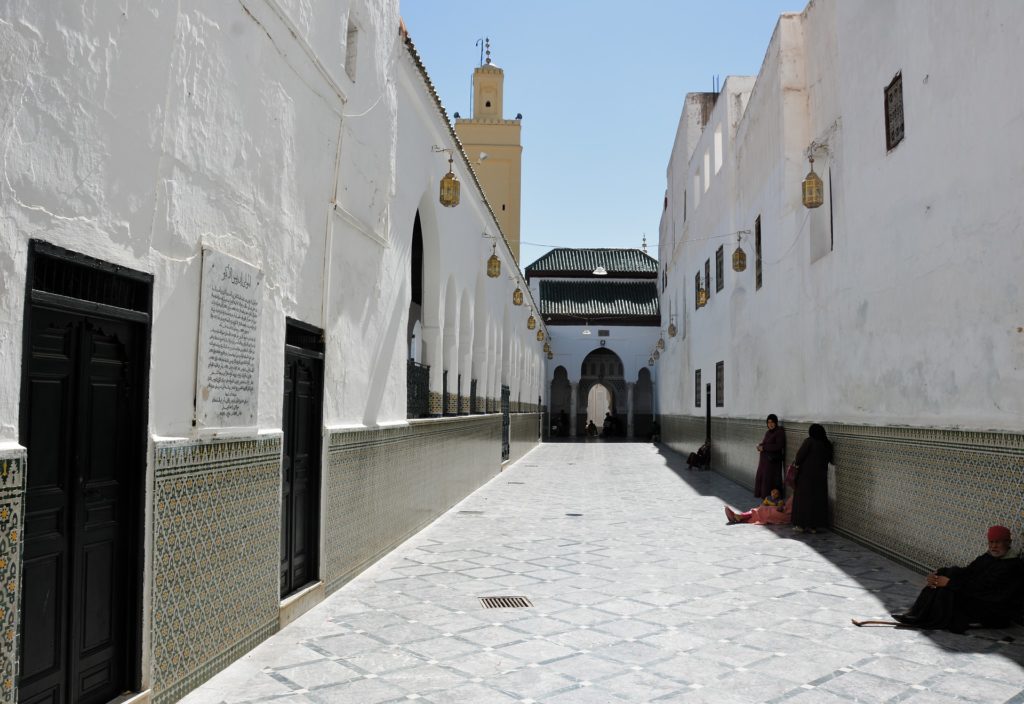
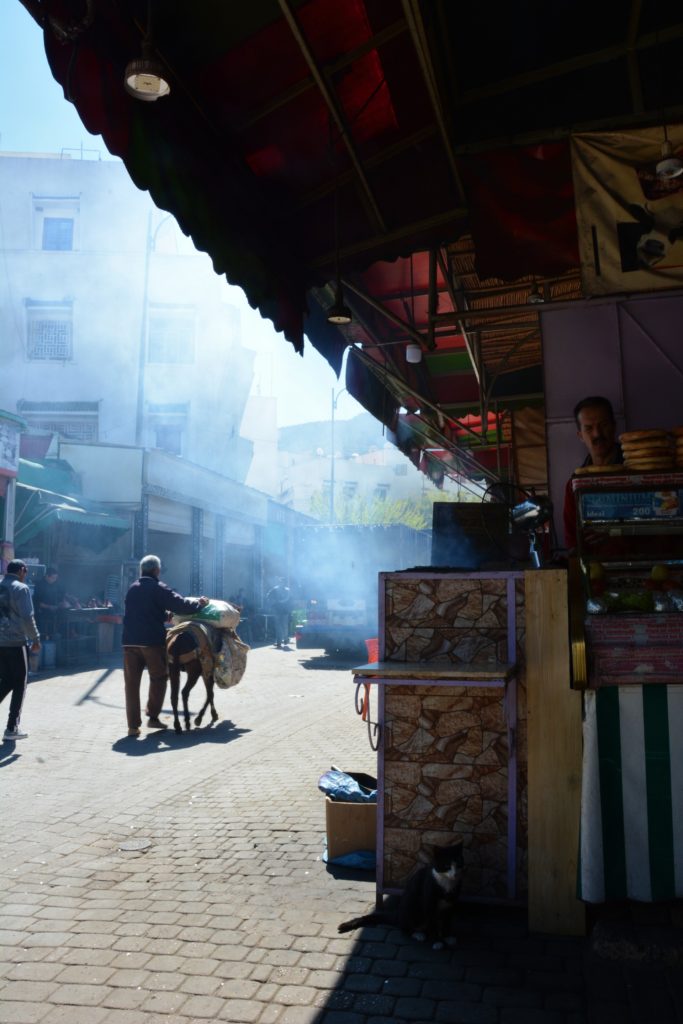
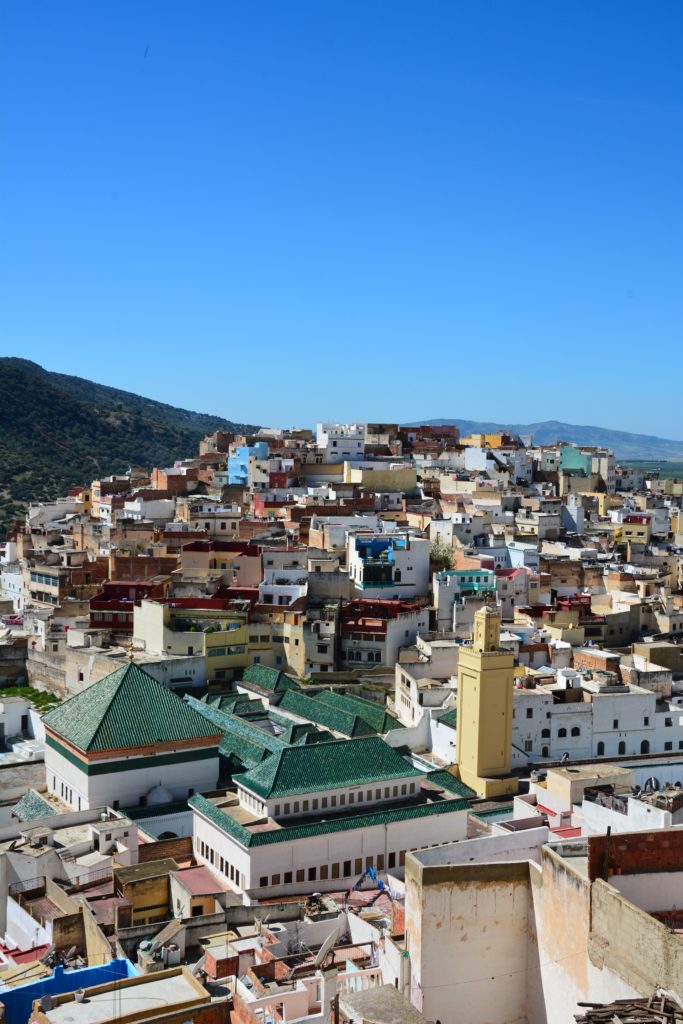
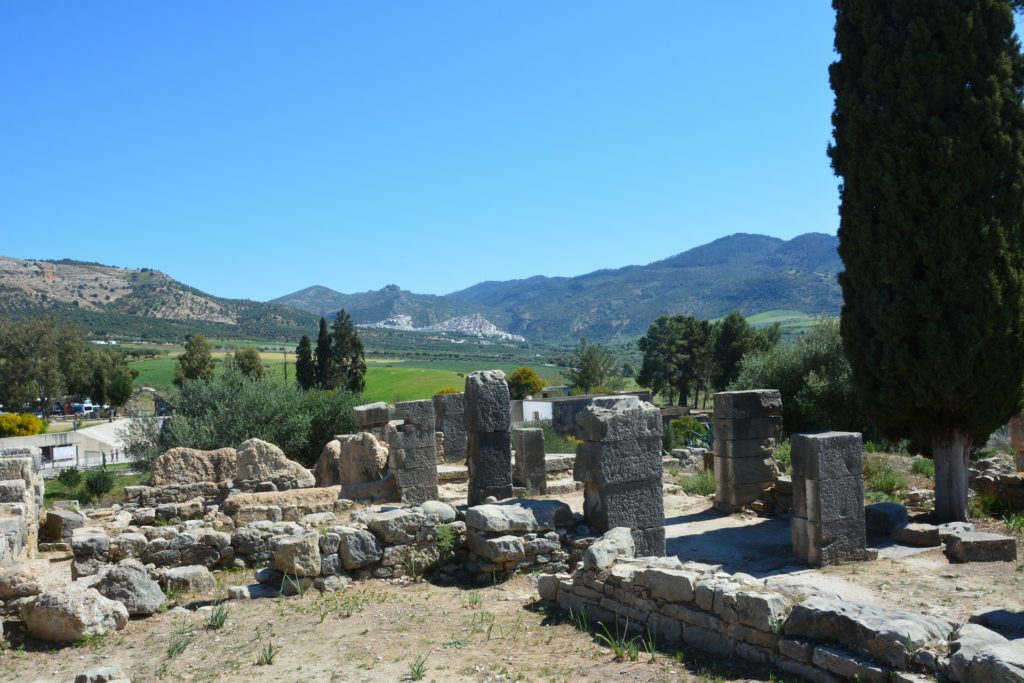

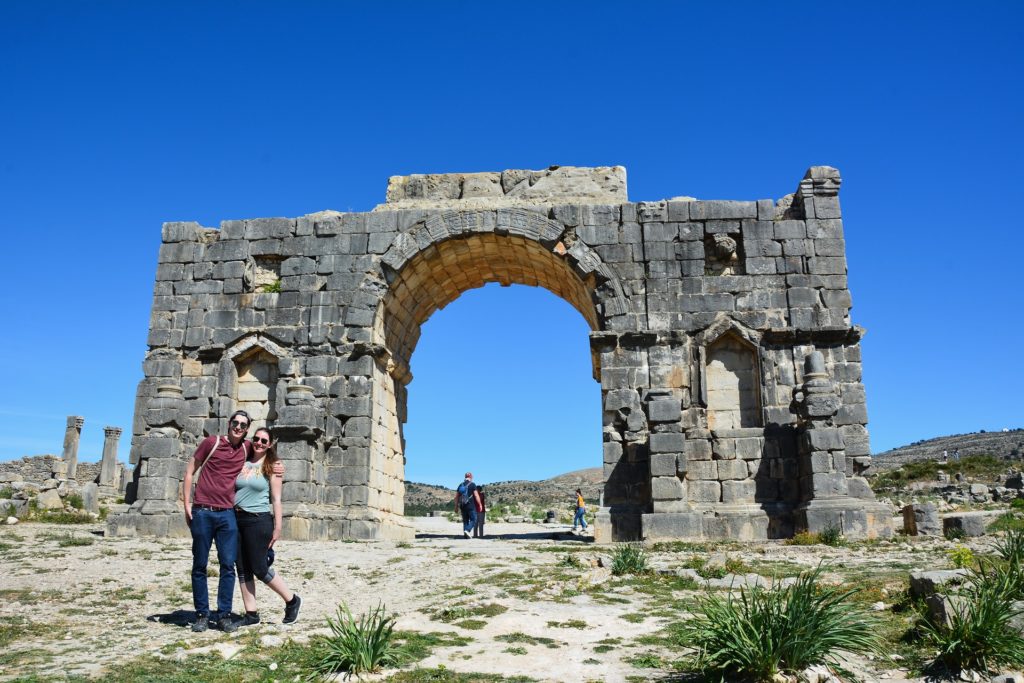

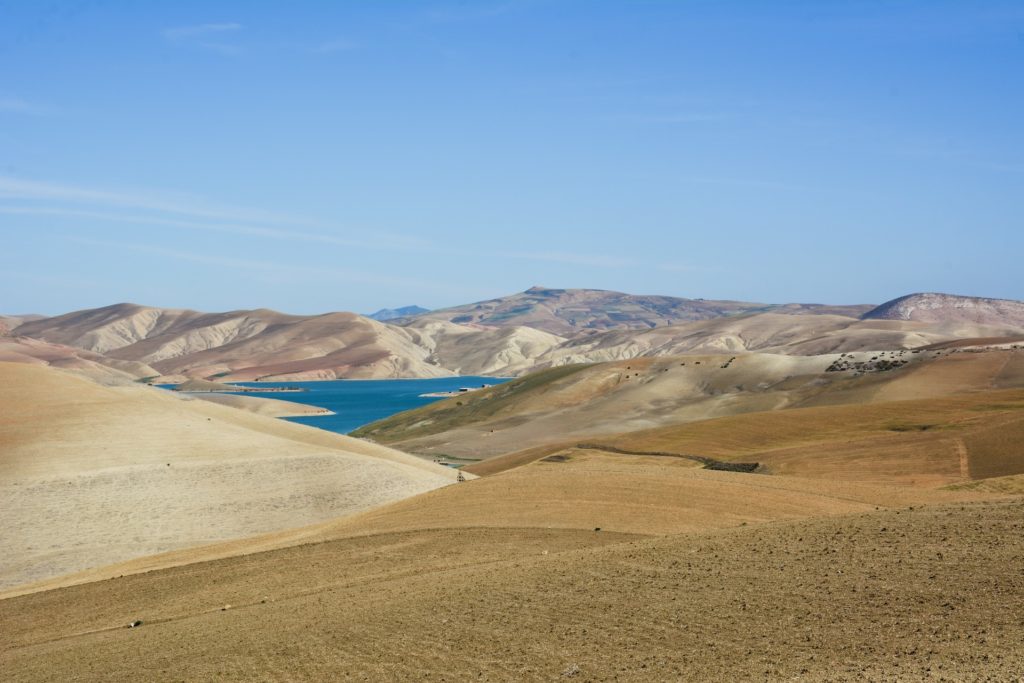
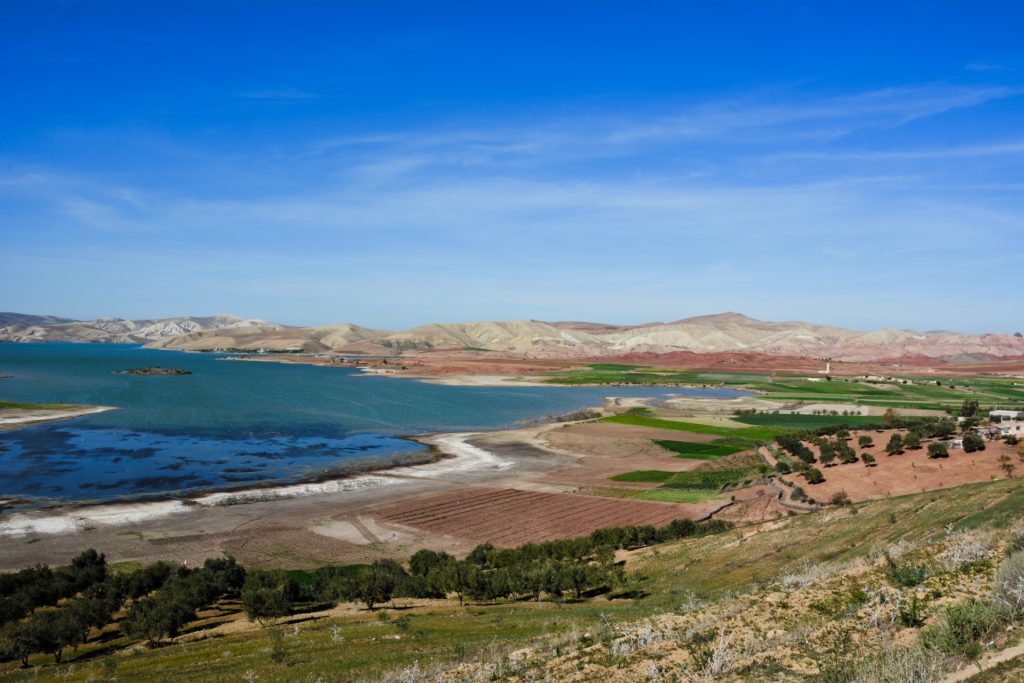
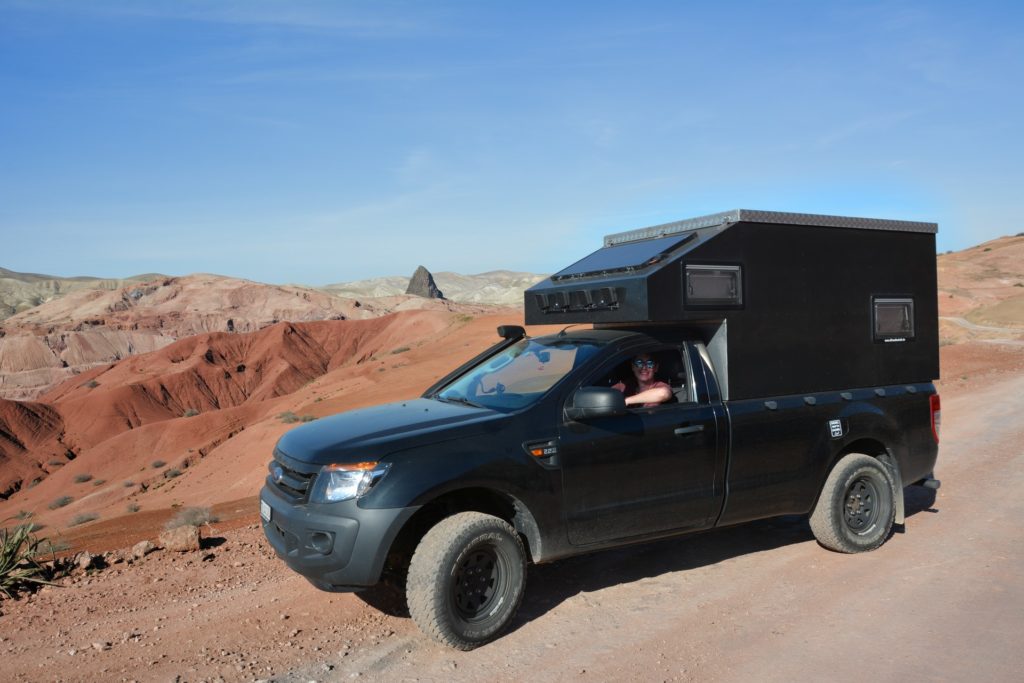
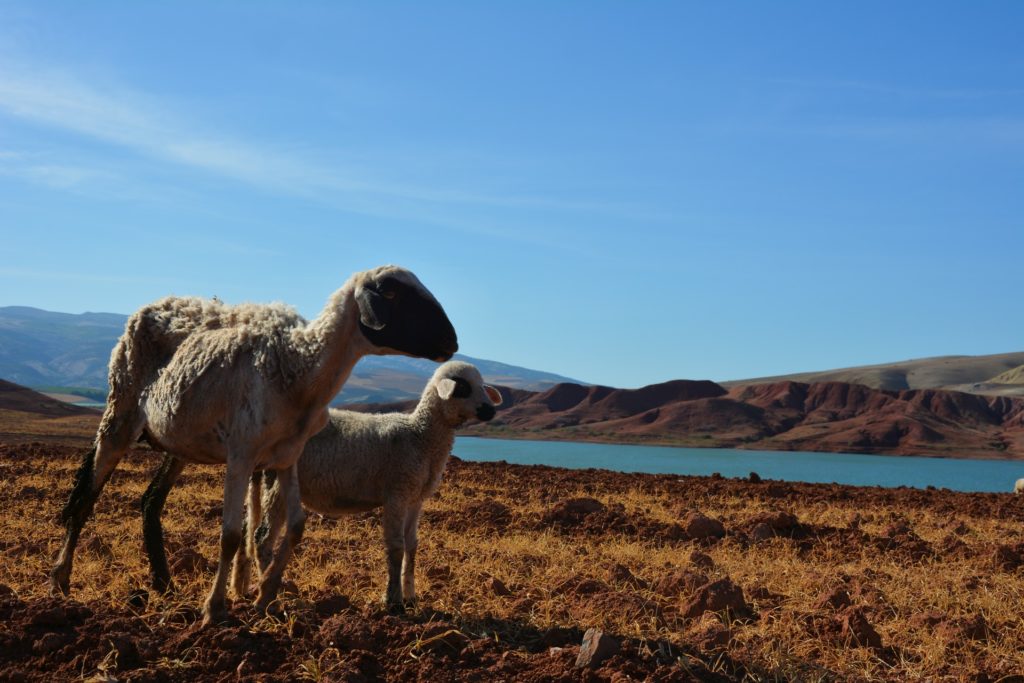
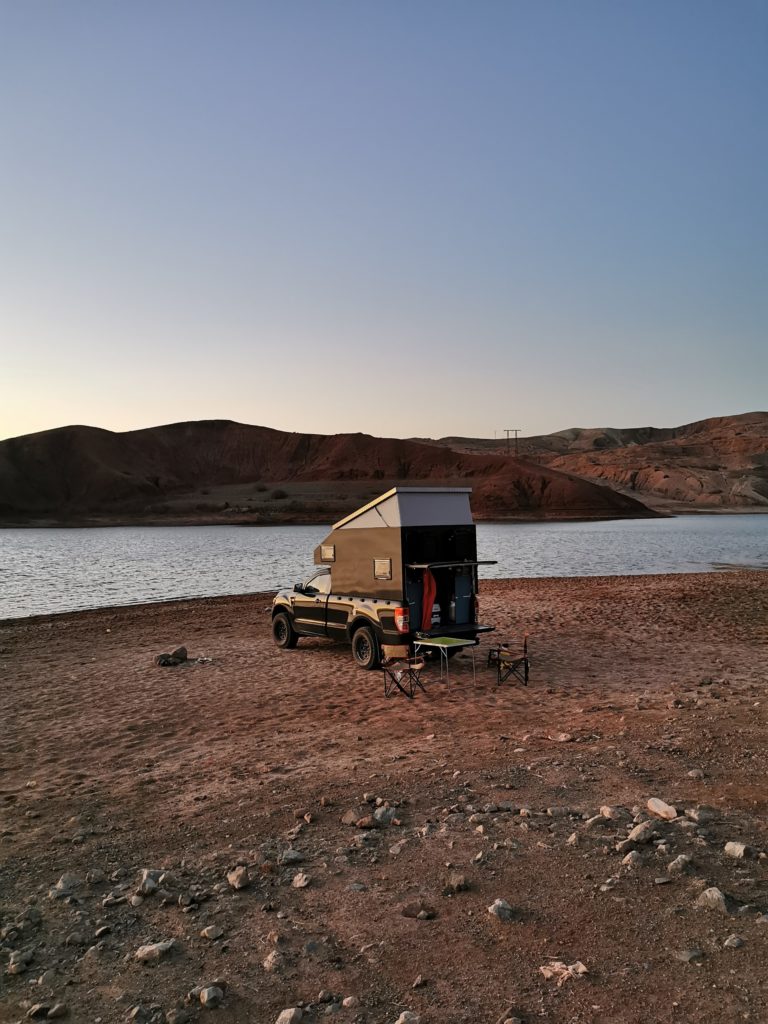
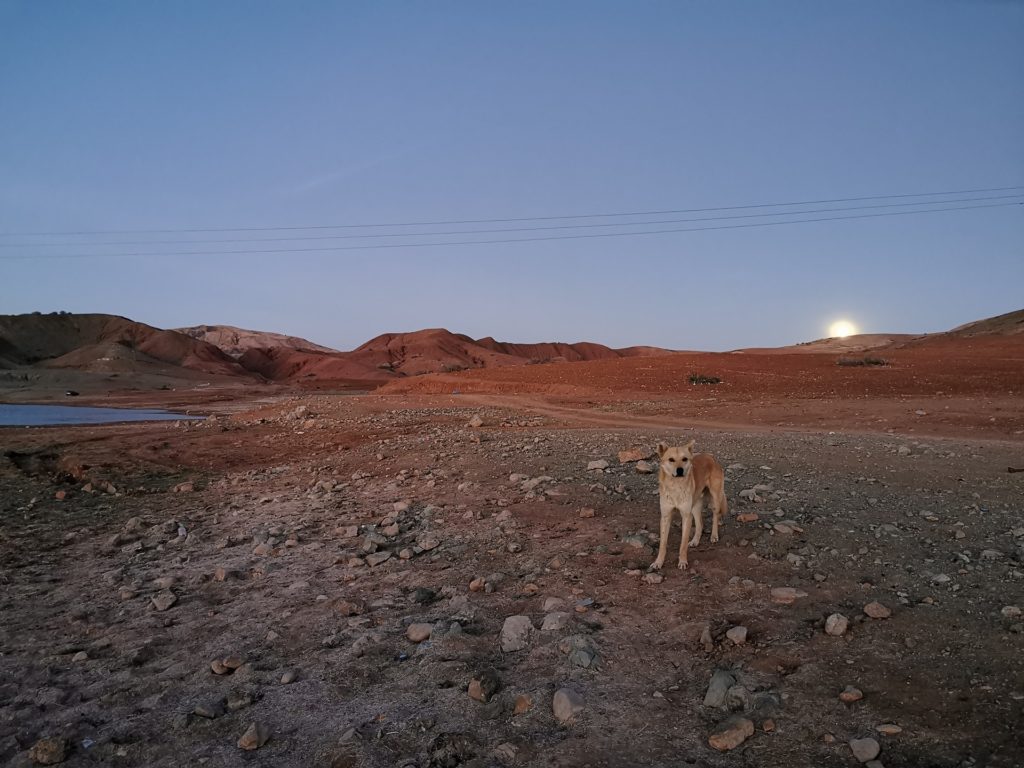
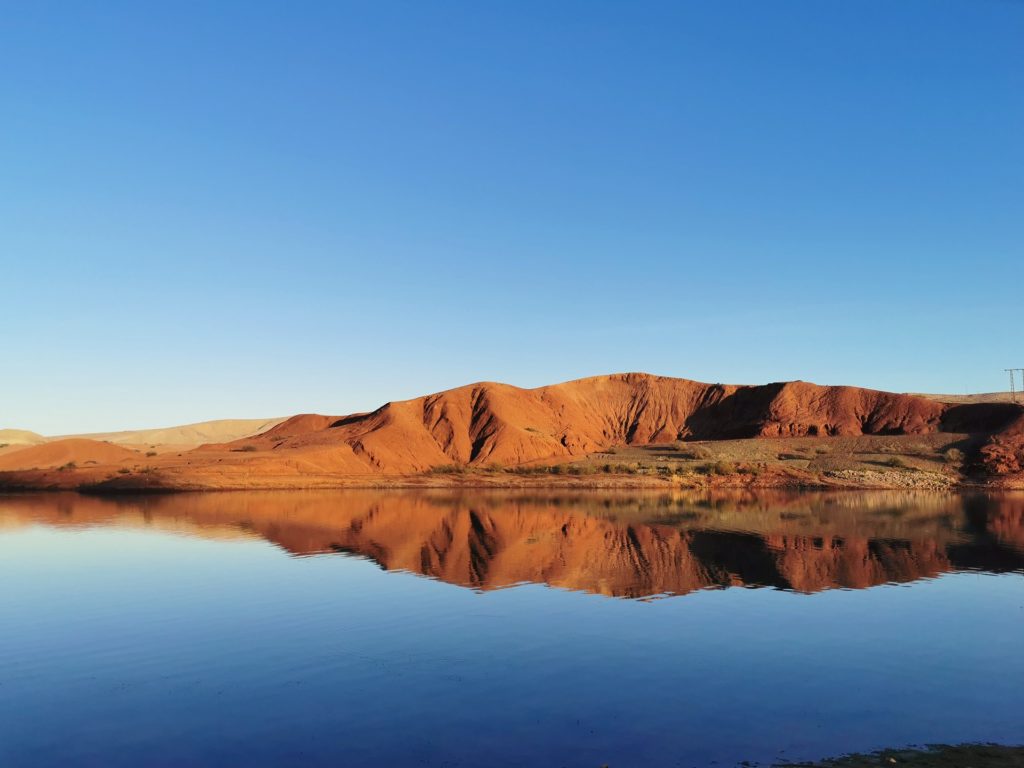
The next morning, we headed straight for Fès. It’s the oldest of the four imperial cities. At first, we drove around the city centre to get a glimpse of the size and beauty. At the Bab Guissa (the oldest city gate of Fès dating back to the 13th century) we parked our car and walked down into the Souks. Particularly impressive was the souk of the coppersmiths and the tanneries. Fighting the strong smells, we watched local workers first preparing the goatskin with Ammoniak, washing it and later colouring it with many different but all natural colours. Walking back to our car, we ended up behind three donkeys that were loaded with many, still dripping skins. I ended up being very happy for the mint leaves that a local gave me to fight the smell.
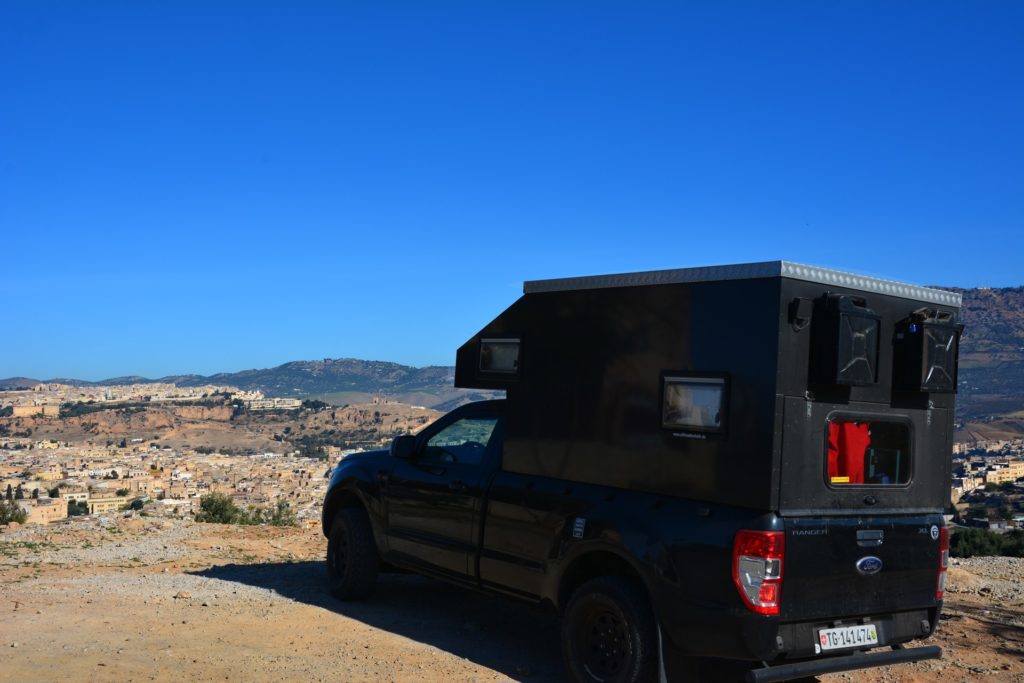
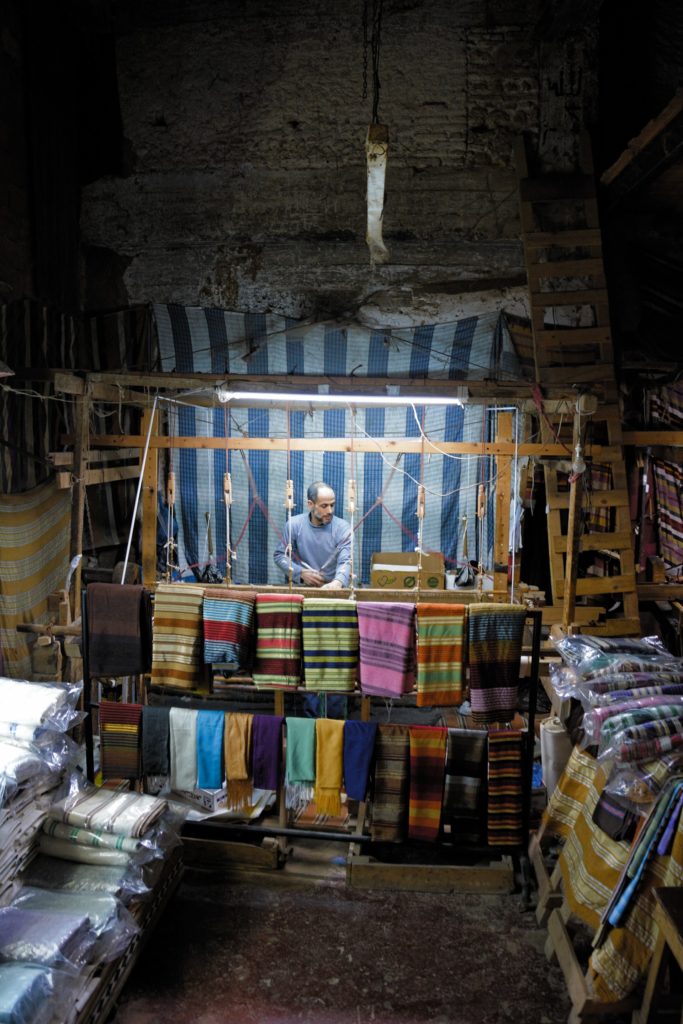
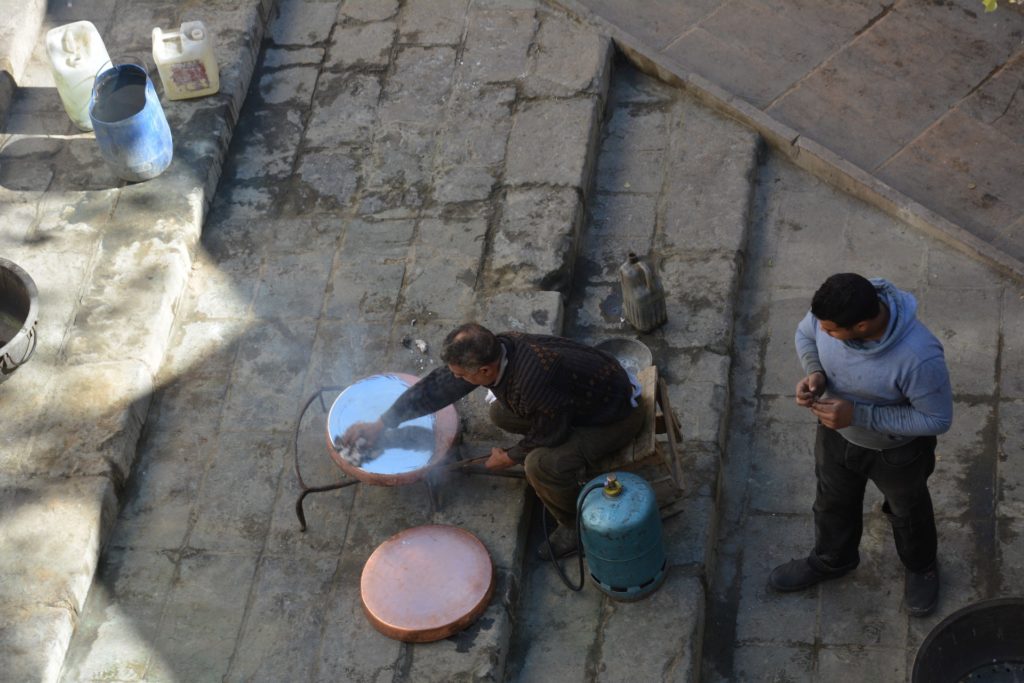
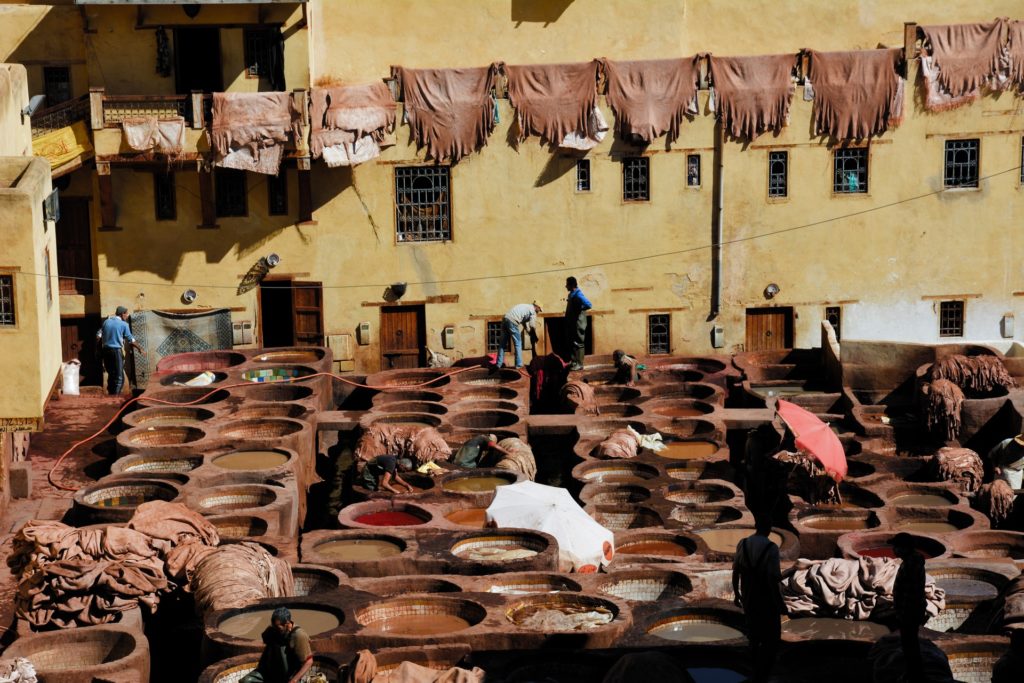
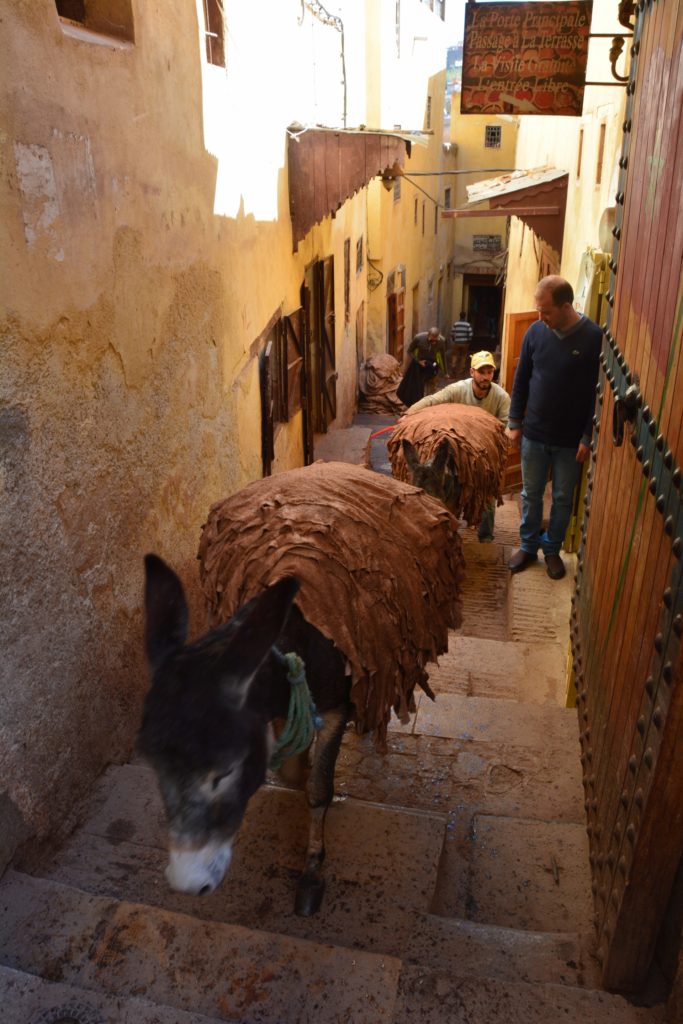
MOUNTAIN LIFE
After some grocery shopping (and a cake for lunch) we made our way to Ifrane. Shortly before the road ascended to the mountains we spotted the first camels on our trip. Ifrane and Mischliffen are famous winter sports resorts up in 1650m. The towns are very popular amongst wealthy Moroccans to flee the summer heat and Ifrane has a glamorous vibe supported by the rather alpine architecture including the for us “normal” roofs (everywhere else in Morocco the roofs are flat). On our way from Mischlifffen to Azrou, we saw the last remains of this winters snow and some ski lifts.
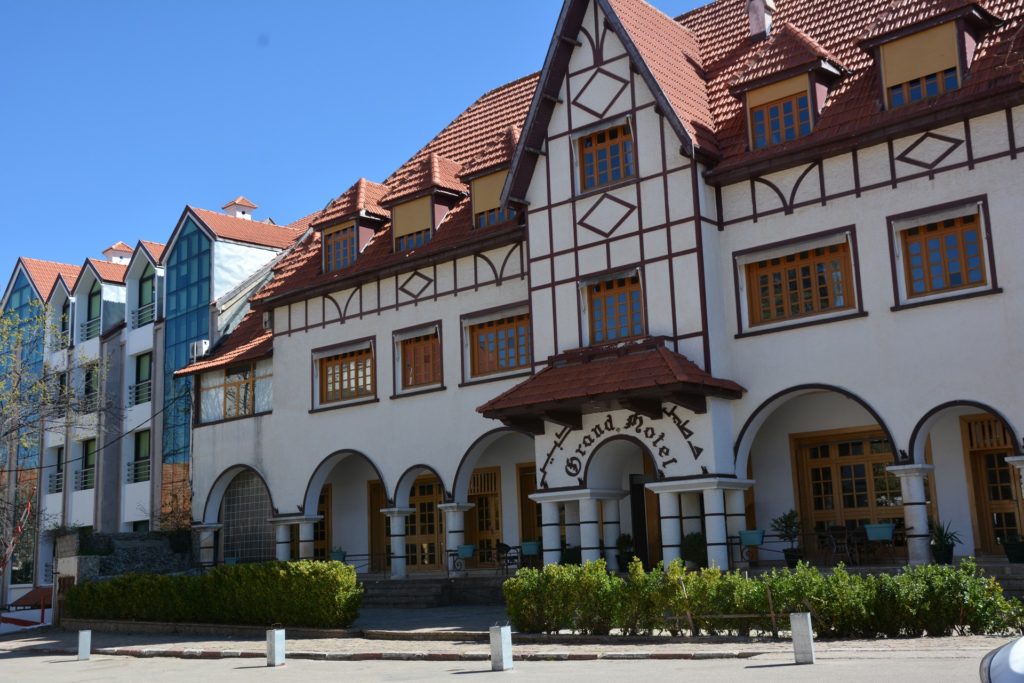

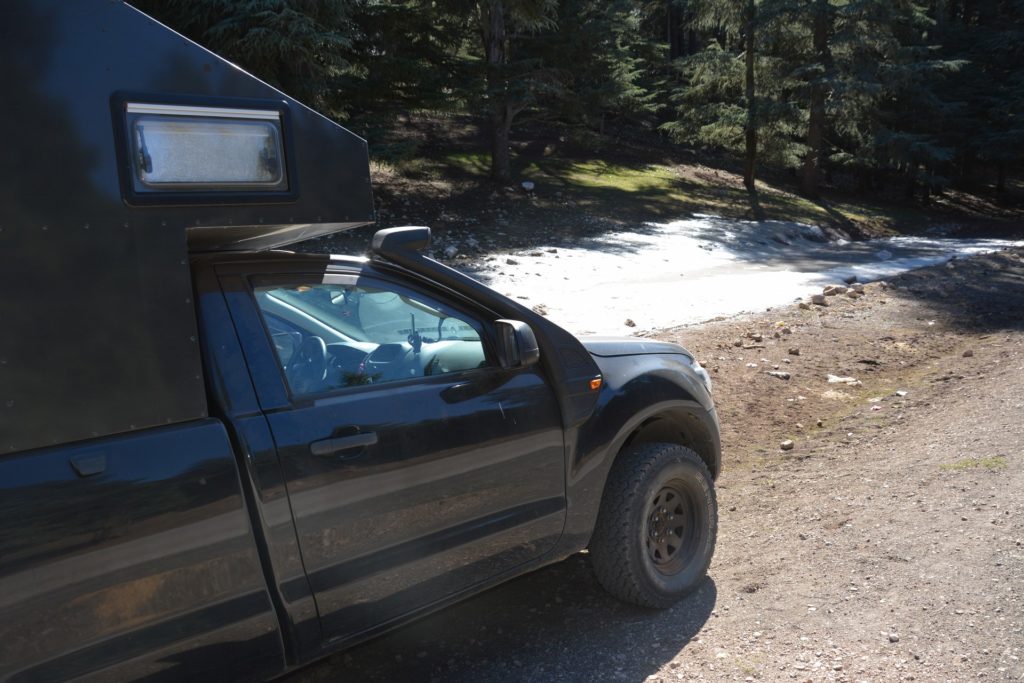
After a short stop, we continued driving through mountain meadows and deserts which Berber nomads call their home. Unlike the shepherds we saw until today, these were herding a 100+ sheep. The huts seemed very rustic consisting of some stones and simple roofs. It made for great scenery. We had found a small detour on a piste through the cedar forest of Azrou which is home to a lot of Berber monkeys. At the end of the track, there is the biggest although dead cedar tree in Morocco. To our surprise the track was walled of just before joining the normal road again – presumably to prevent the tourists to drive around or into the tree. One of the souvenir merchants pointed us to a very narrow path through the woods where we had to be careful to not hit the trees and tourist-chasing monkeys. We stayed the night at the Eurostarcamping where our highlight was a litter of eight tiny dogs in the reception area and a wild bunny I befriended right next to our camper.
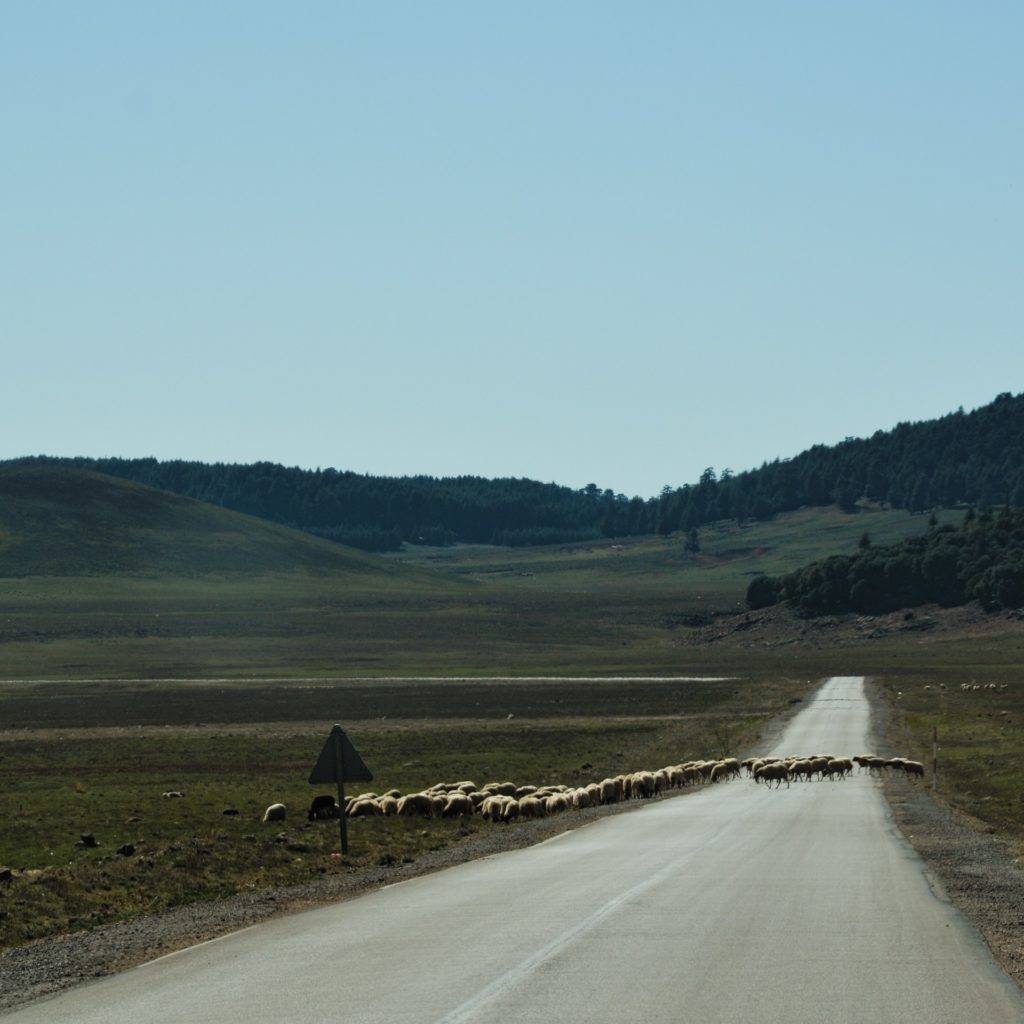
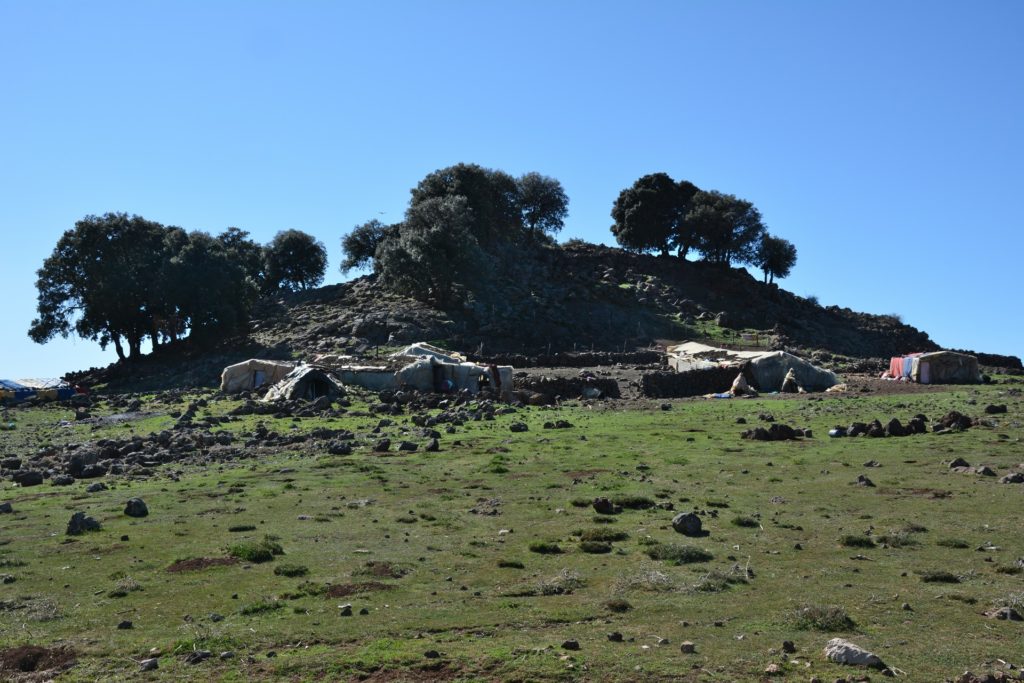
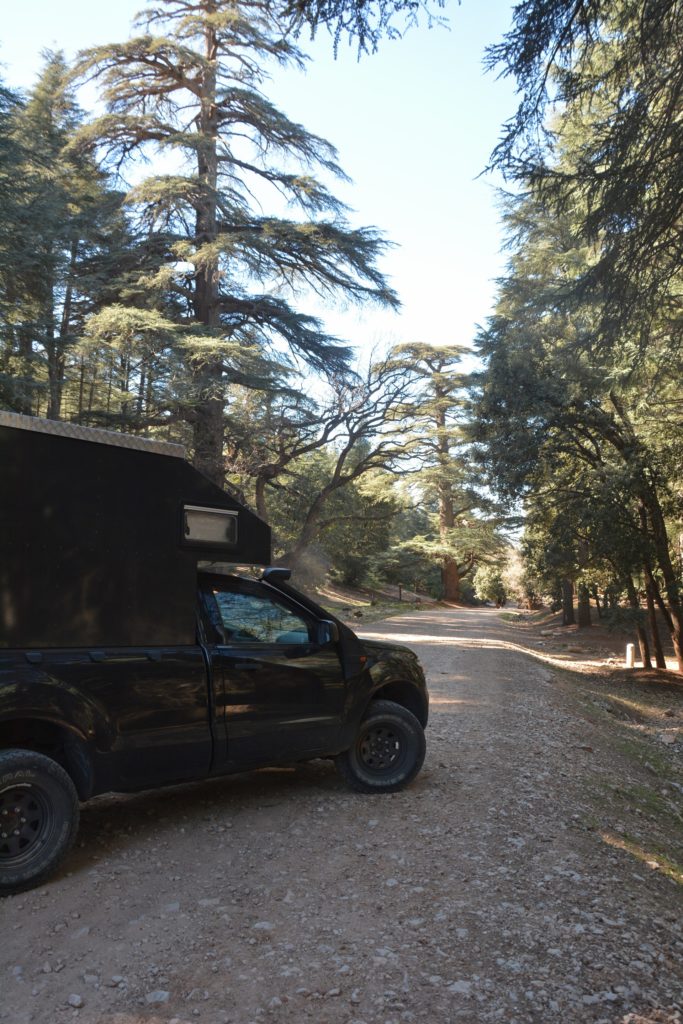
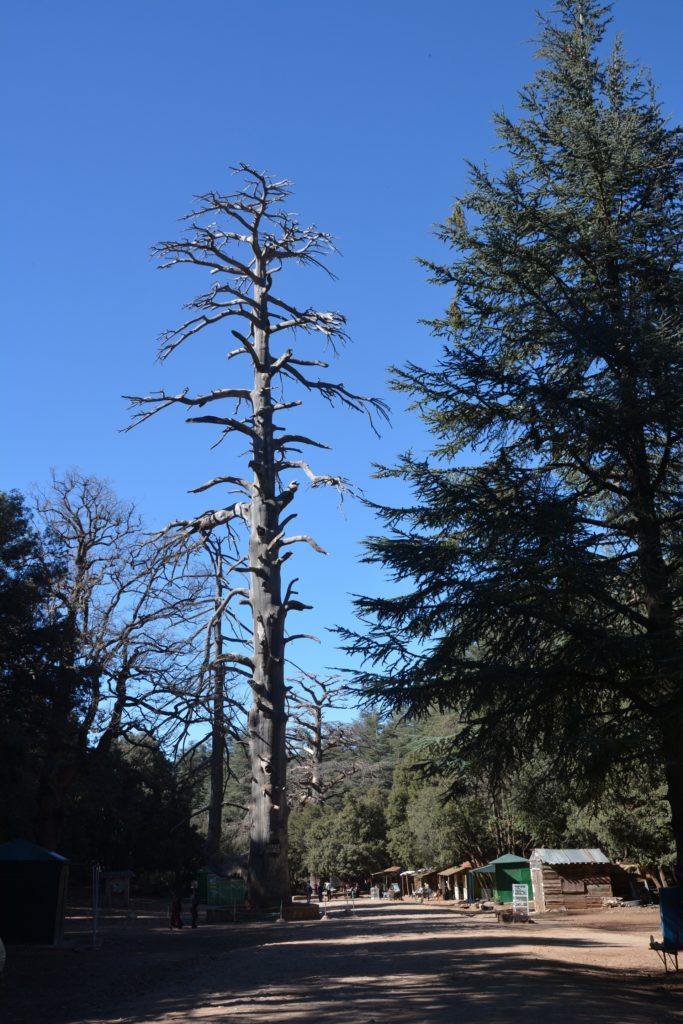
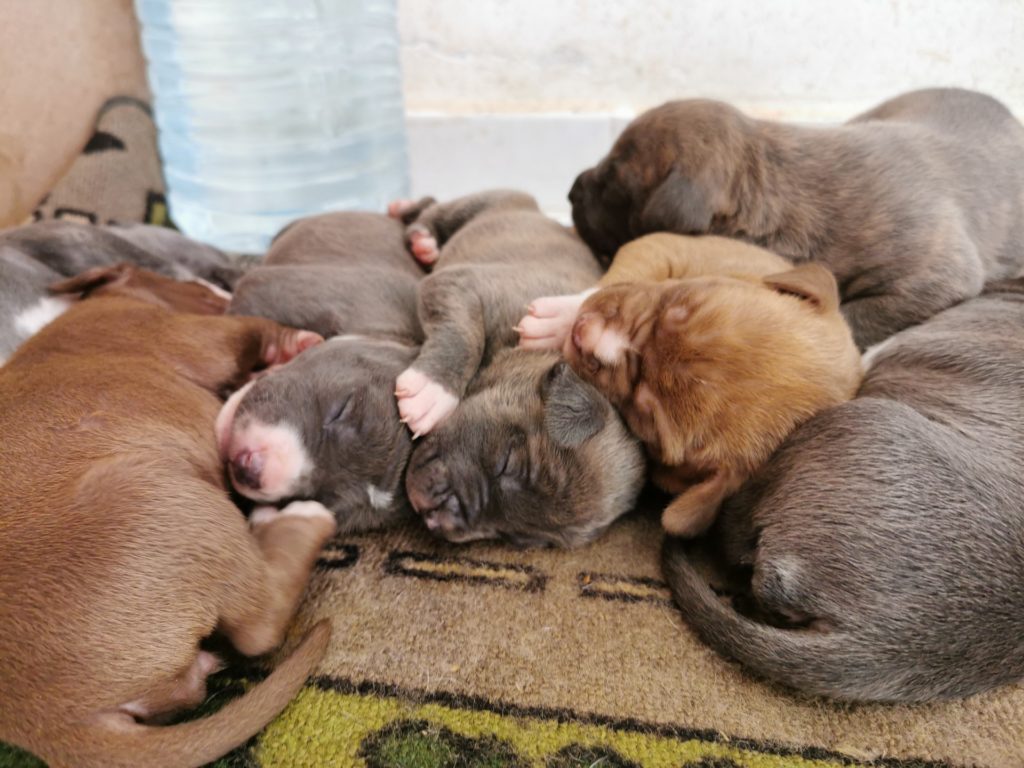
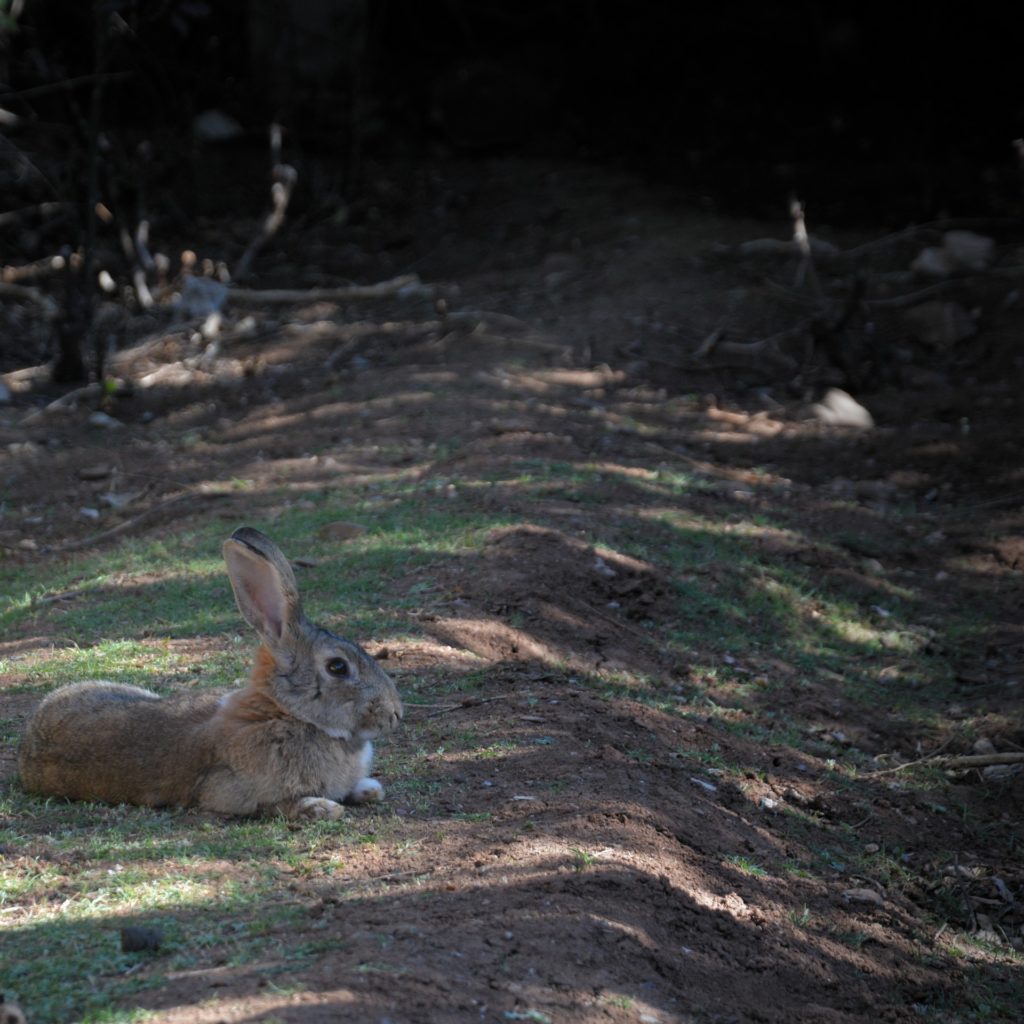
OASIS AND DESERTS
Our next stop was the spectacular Ziz valley. Starting from Azrou we drove south and made a short stop at a reservoir for a quick hike. We were promptly joined by a curious stray dog, who wouldn’t leave our side at all. He seemed young and playfully nabbed at our pants. Once we left he even tried to follow our car, which got us concerned we might hit him.
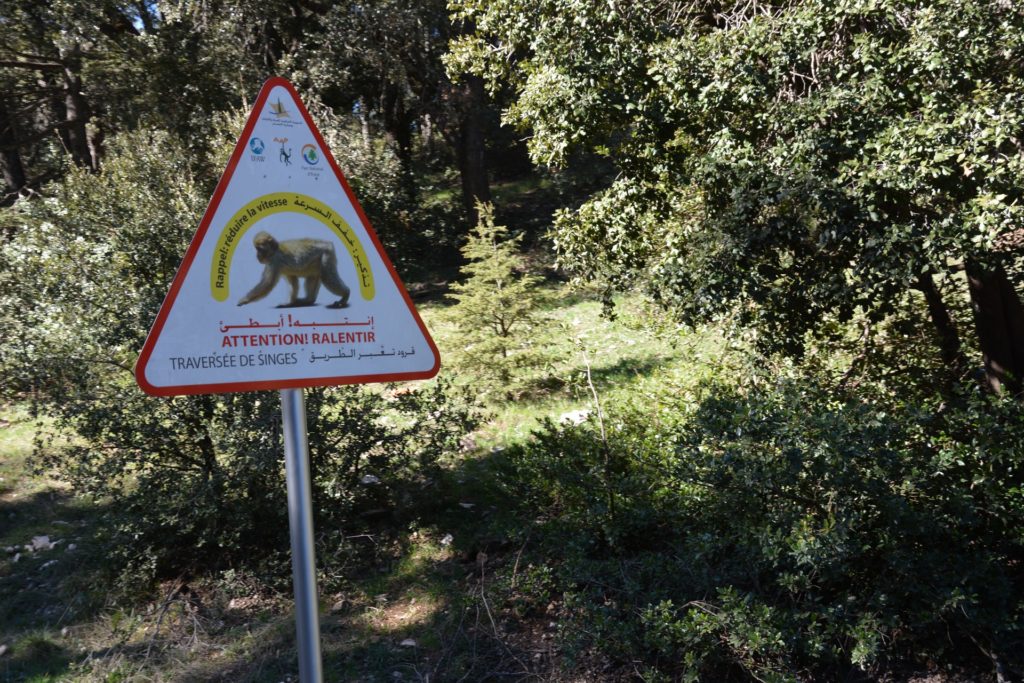
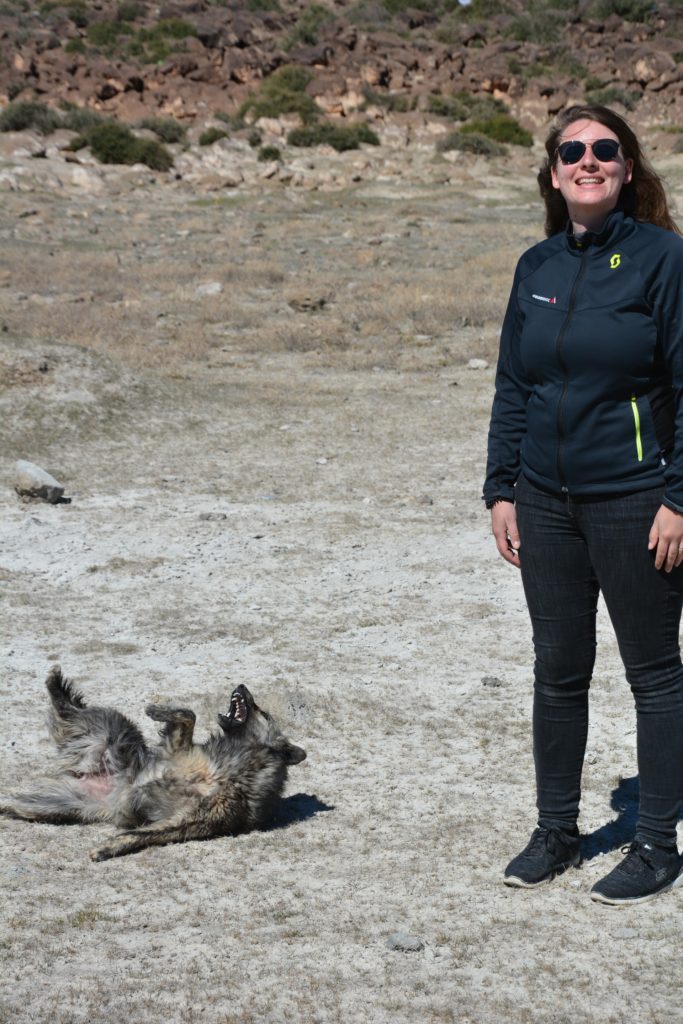
Afterwards, we drove by Midelt and Karrandou where we did a short lunch stop. The place we ate was part restaurant and part butchery. At least we did not have cows and goats heads dangling right next to us like on the other side of the street. After Karrandou the landscape became even more desert-like which was a stunning view in combination with the snow-covered mountains in the background.
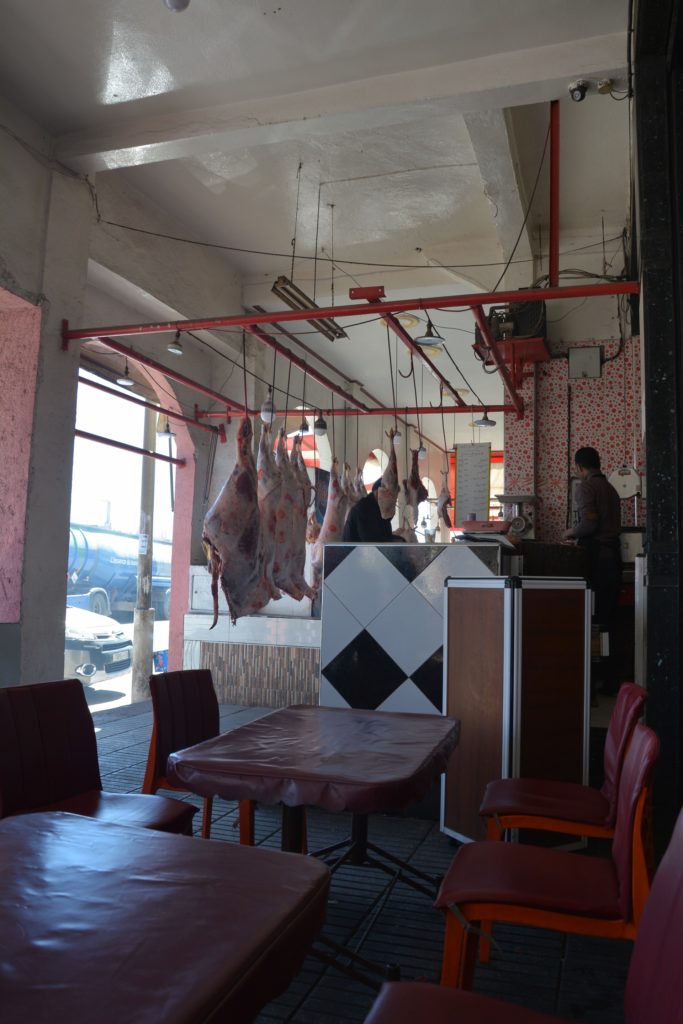
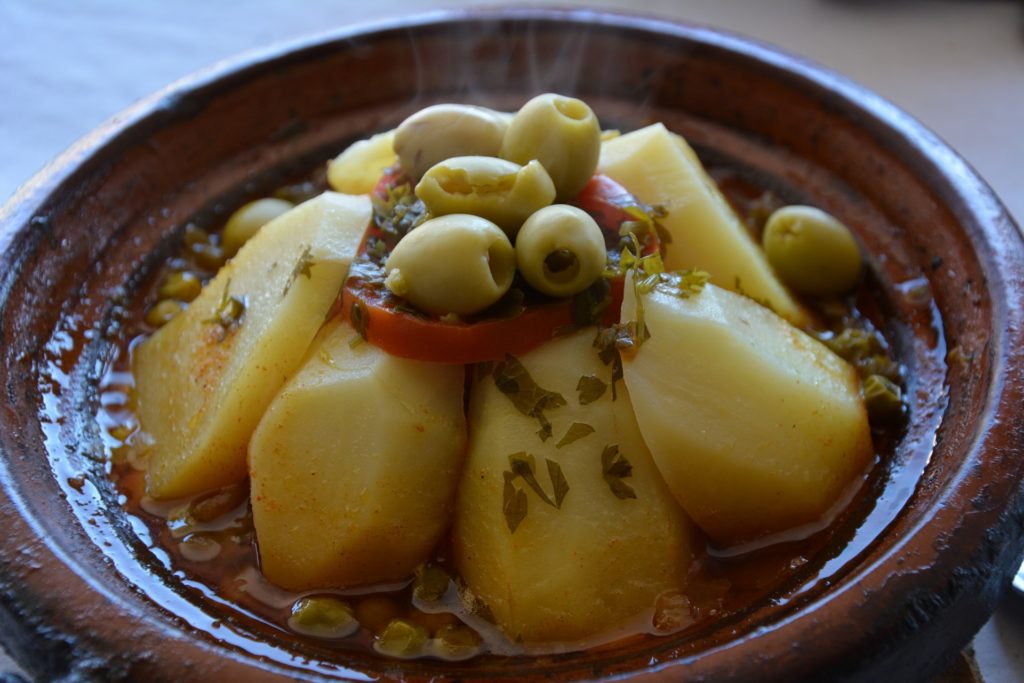
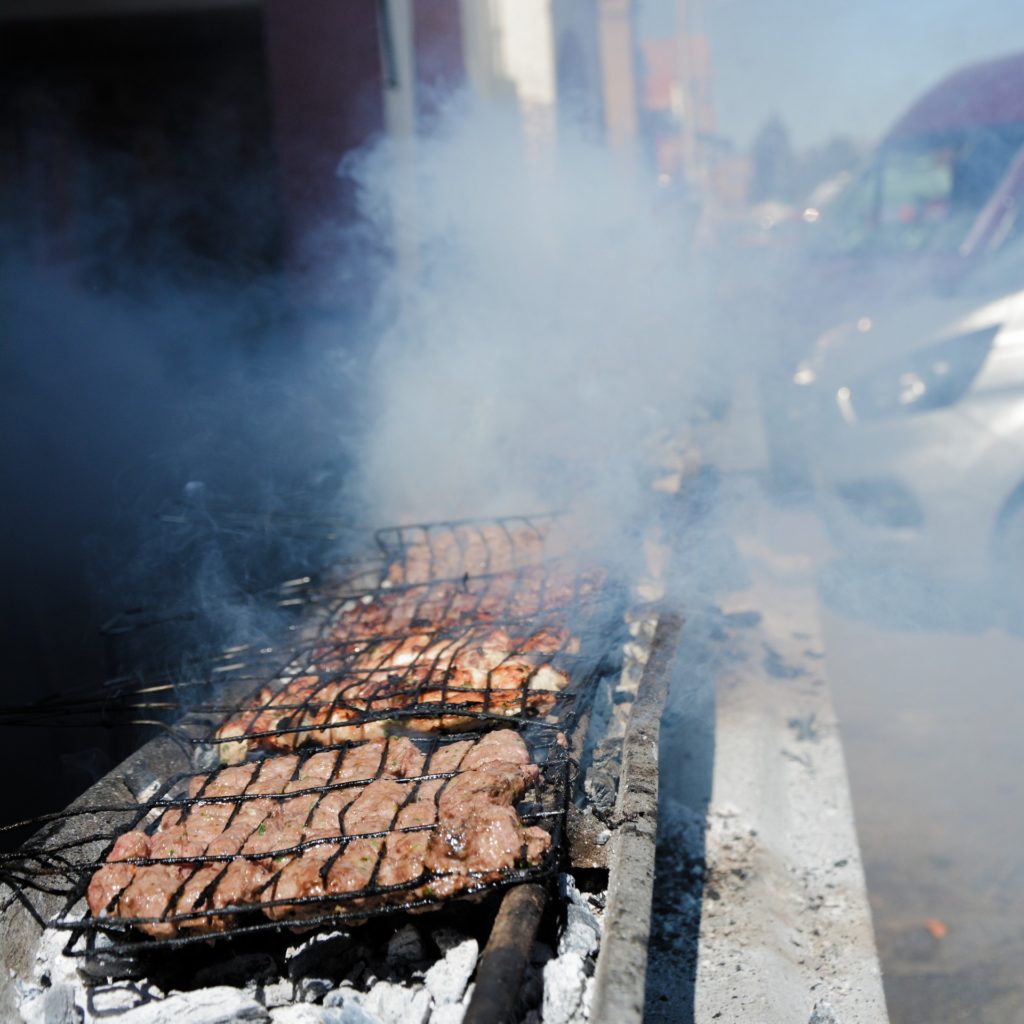
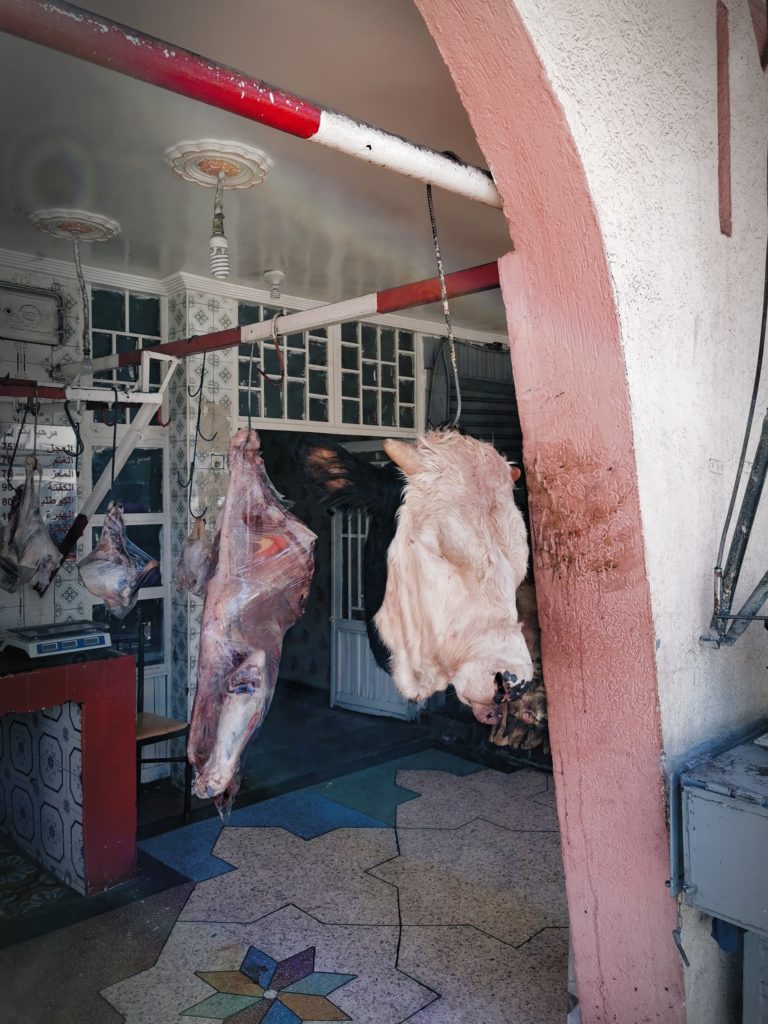
When stopping for pictures sometimes we would get approached by people ever since entering Morocco. More often than not they offer to sell us something or want to show us something. A new experience in this region is that they propose trades instead of just selling stuff.
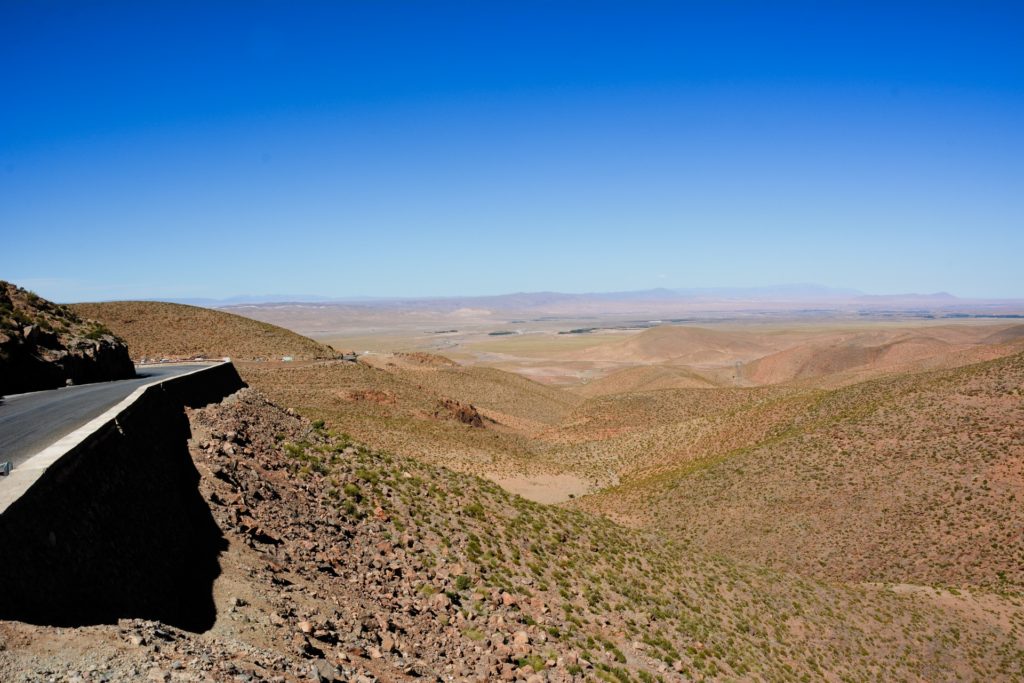
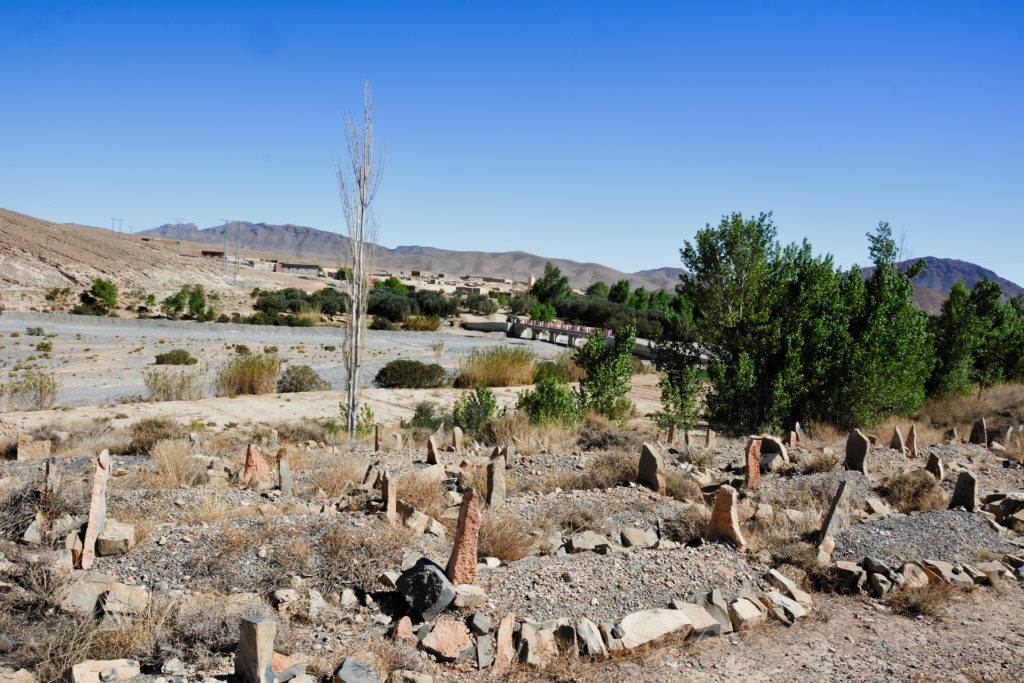
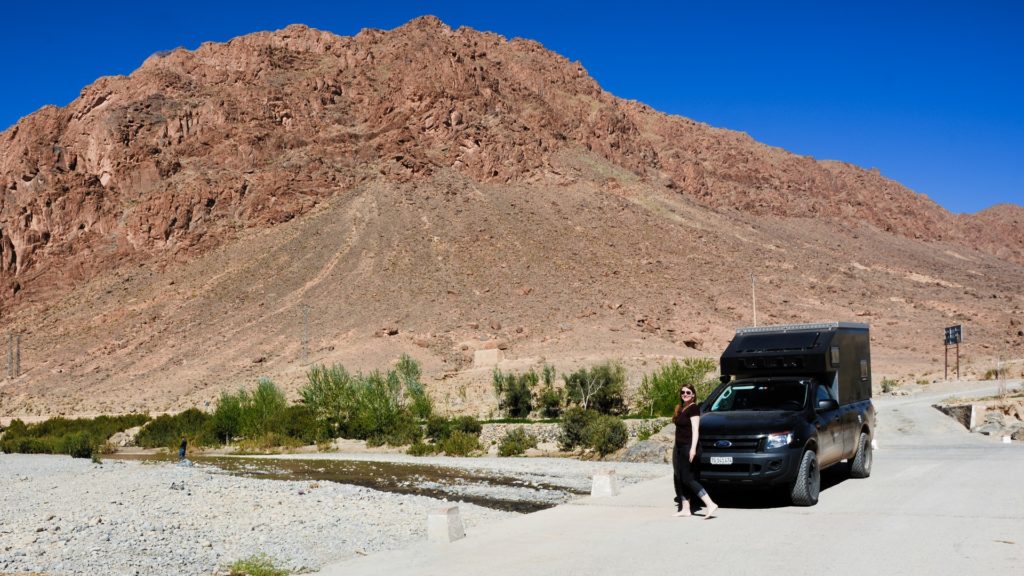
Soon after the Ziz canyon started. The water from the high mountains allows gardens, palms and further vegetation to grow while the canyon is surrounded by barren land. We spent the night in the midst of this valley at camping Jurassic and made an evening walk along the river accompanied by croaking frogs and a ton of birds. Not wanting to walk back along the same way we ended up wandering through date plantations and the rustic small village consisting of mud houses. Along the way, we collected firewood and finally had our first barbecue.
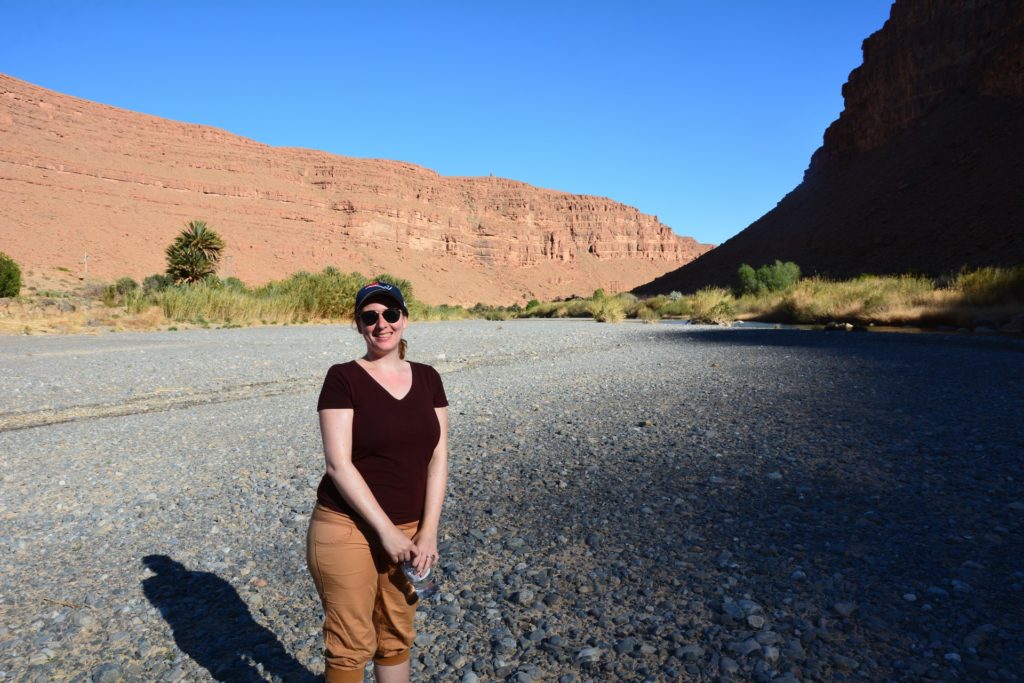

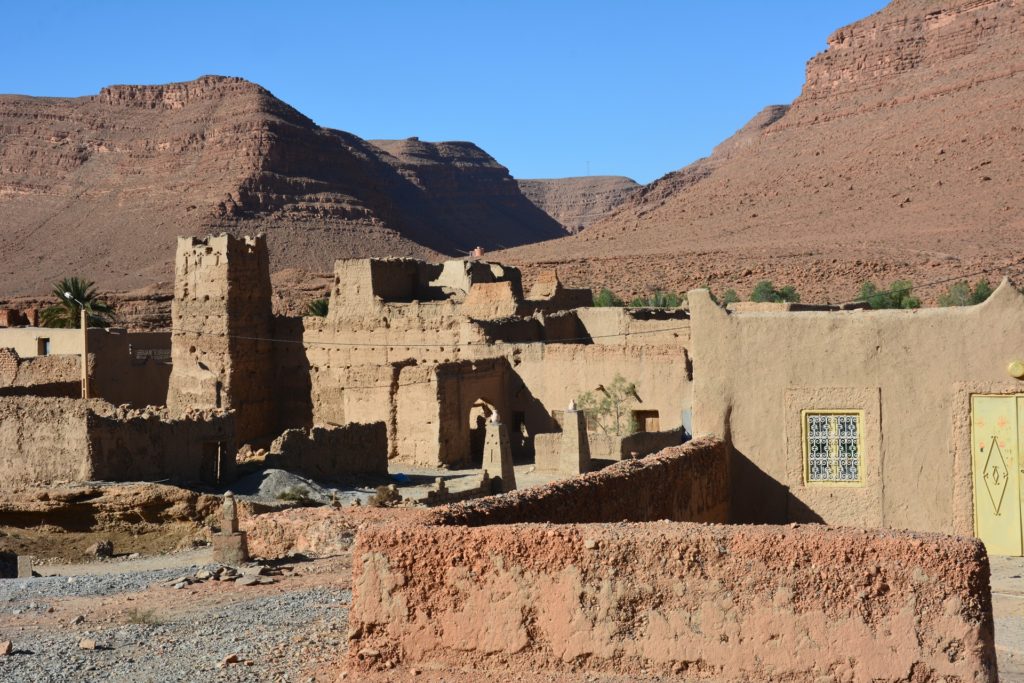
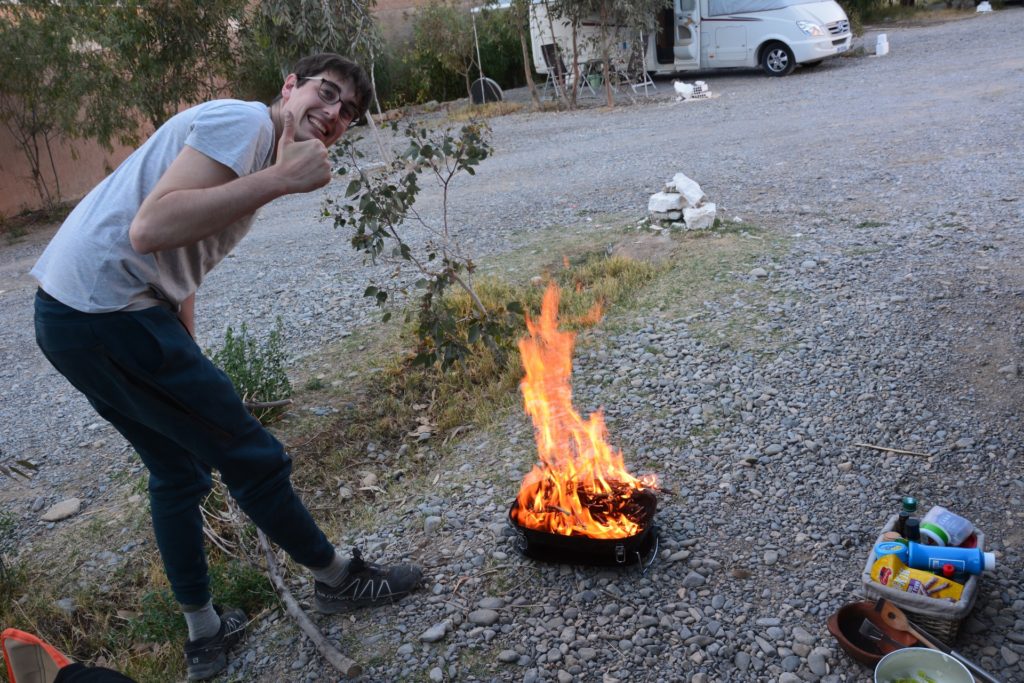
Still following the Ziz river we made our first stop on Thursday in Erfoud where we stopped at an orange juice stand and had a drive-in drink. With lunch approaching, we got to the Source Bleu in Meski. This source is mainly used as a swimming pool and not as interesting as we thought. Despite no rain in the last two years, the source was still flowing. No wonder it’s a spot that is known around the region.
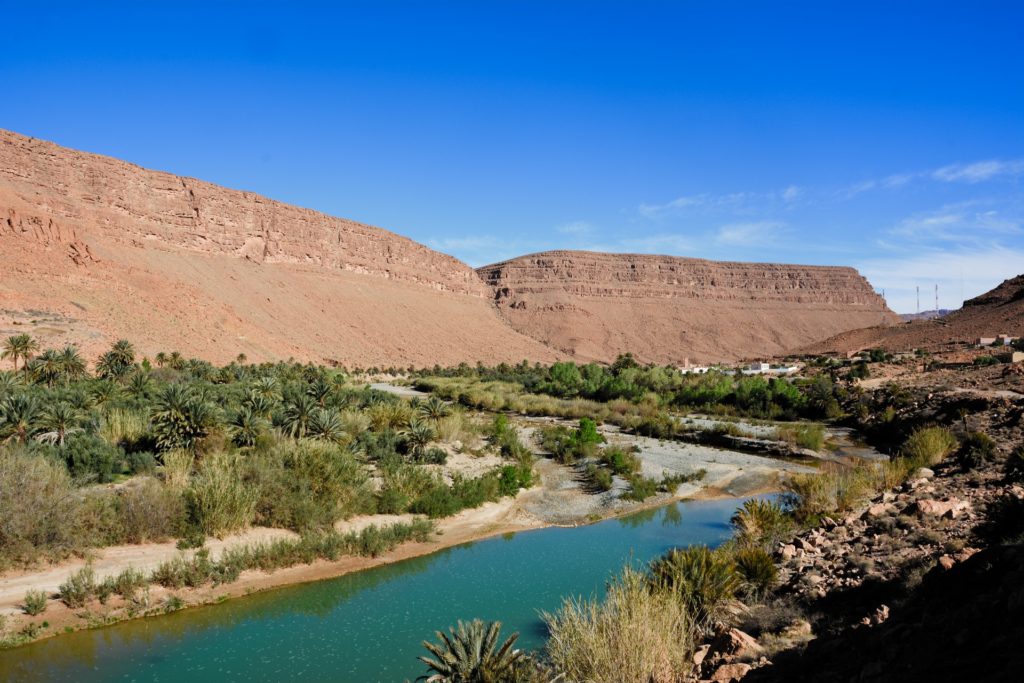
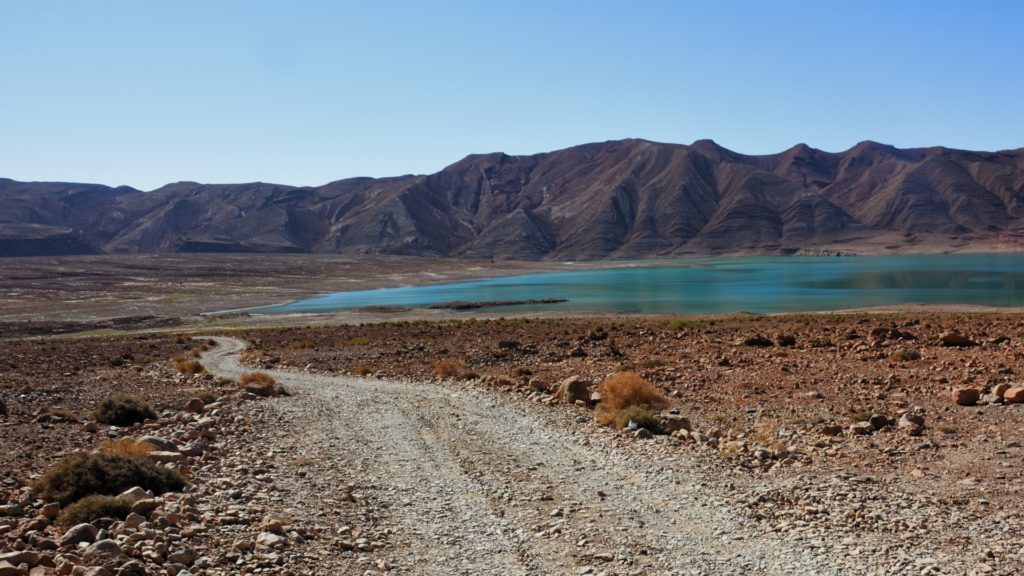
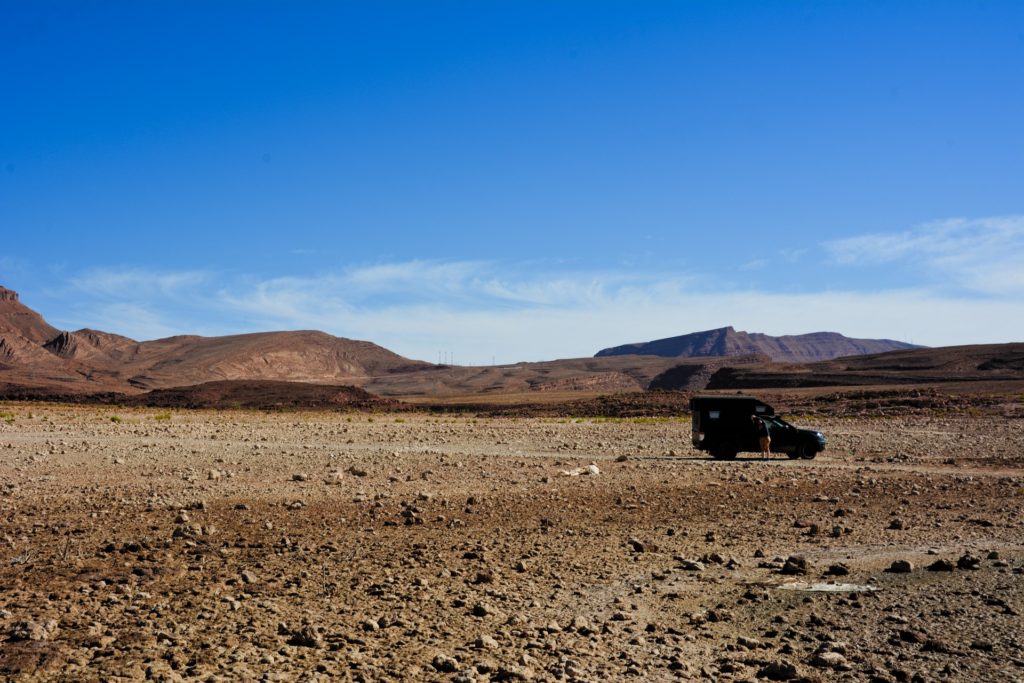
Involuntarily, we spent more time there because right at the parking we walked into Zaid who first invited us to a Berber Whiskey (aka tea) and then showed us the source and of course brought us to the shop of his uncle. The sit-in the shop was friendly but we remained resilient and did neither trade nor buy something. There’s just no place in our car for too many souvenirs. Afterwards, his sister cooked lunch for us. A bit longer than we would have normally stayed at such a place but still pleasant.
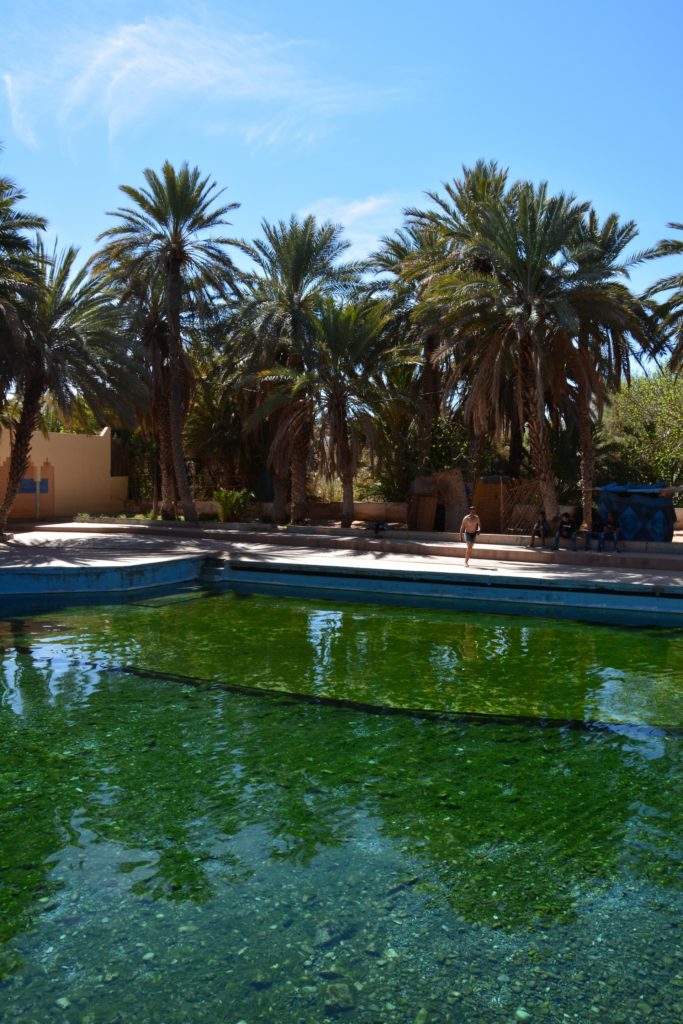
Driving farther south there is again a change of scenery as it gets even drier. Our destination was Merzouga, a town right beside some of the highest dunes in Morocco. The Erg Chebbi is also the largest combined sand desert area of Morocco. We definitely chose the right camping (La Gazelle Bleu) as the owner was really nice and not at all pushy and at the same time the location right next to the dunes was fantastic.
At around 5 we made our way on foot into the dunes. Leaving the camping on the correct side to enter the dunes (on the other side we would have been harassed by countless tour operators selling dromedar, 4×4 or buggy tours) we quickly mounted the first dune. After reading up on the impact the buggy tours have on this sensitive ecosystem we were clear on not giving in on these offerings. We did contemplate doing a camel ride but due to some resurging back pain, we skipped this as well.
For sunset, Thierry had his mind set to climb up the highest dune of Morocco. It was a very steep climb so I waited at the bottom and watched the sunset from one of the lower dunes.
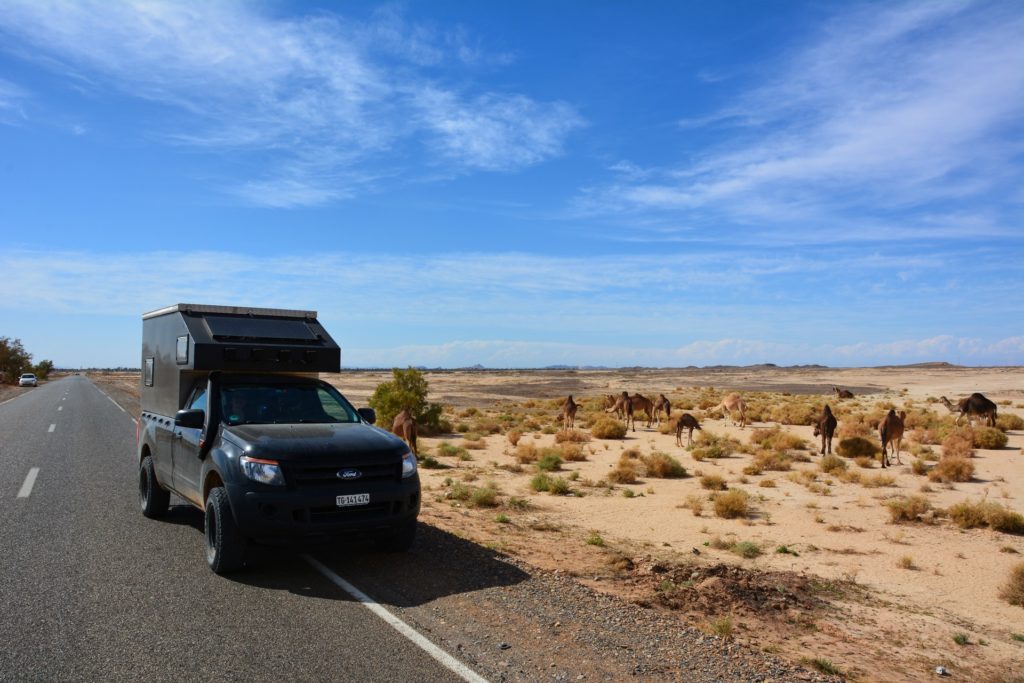
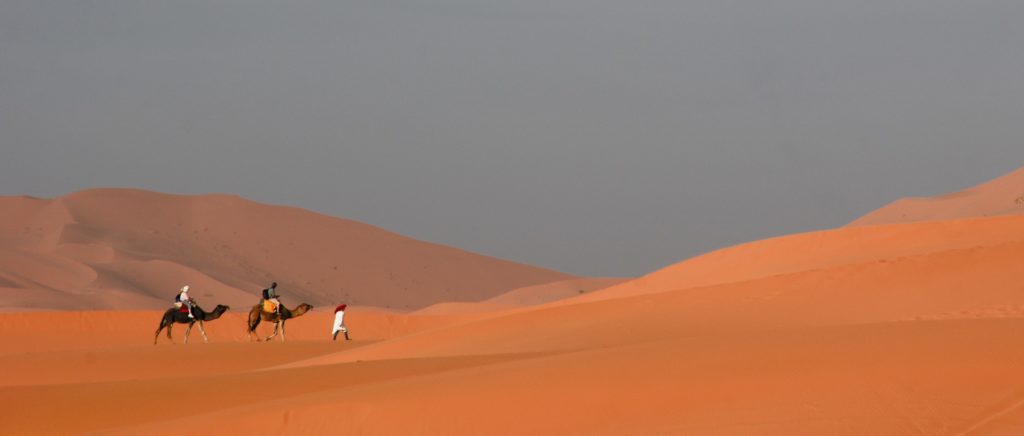
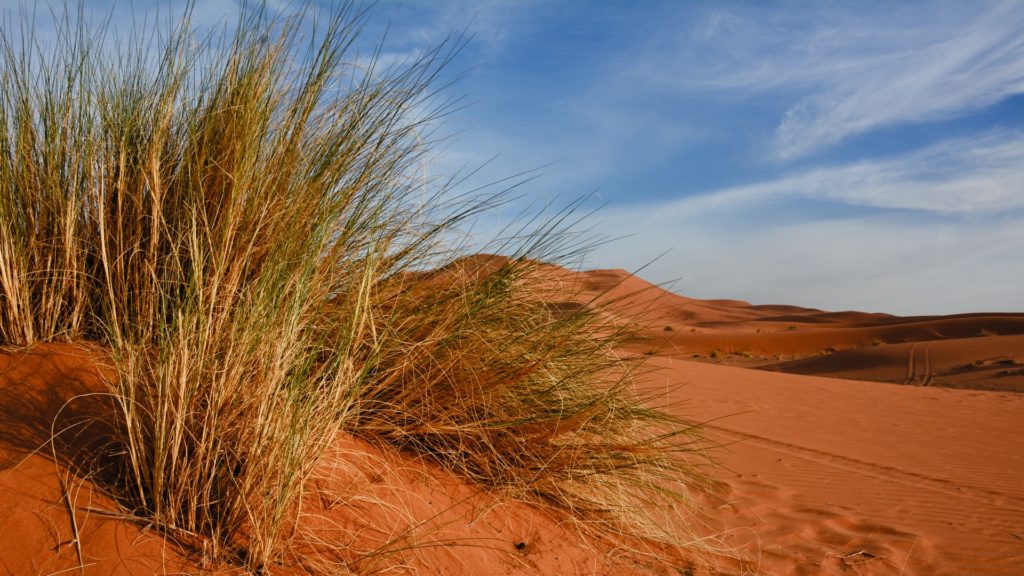
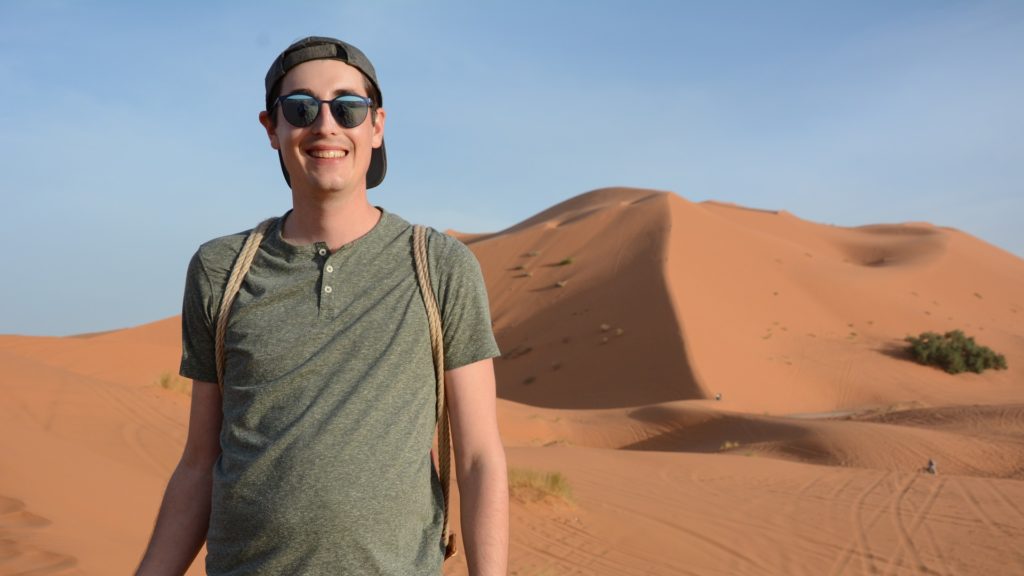
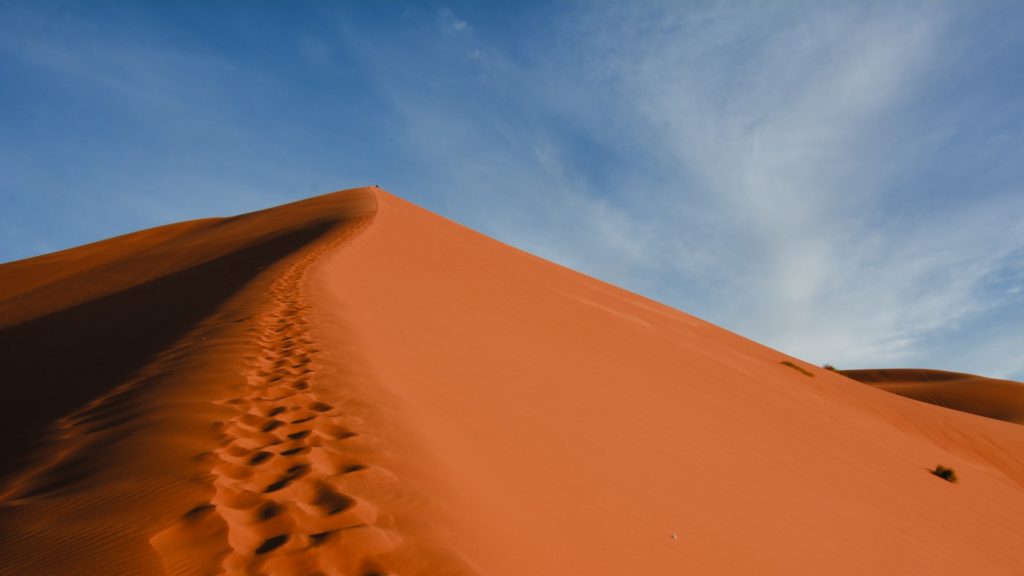
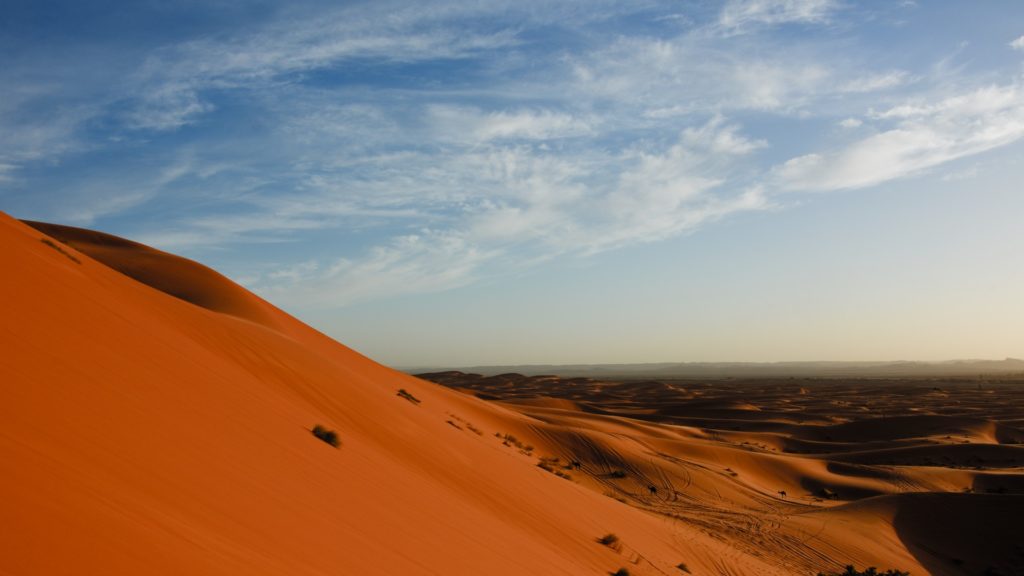
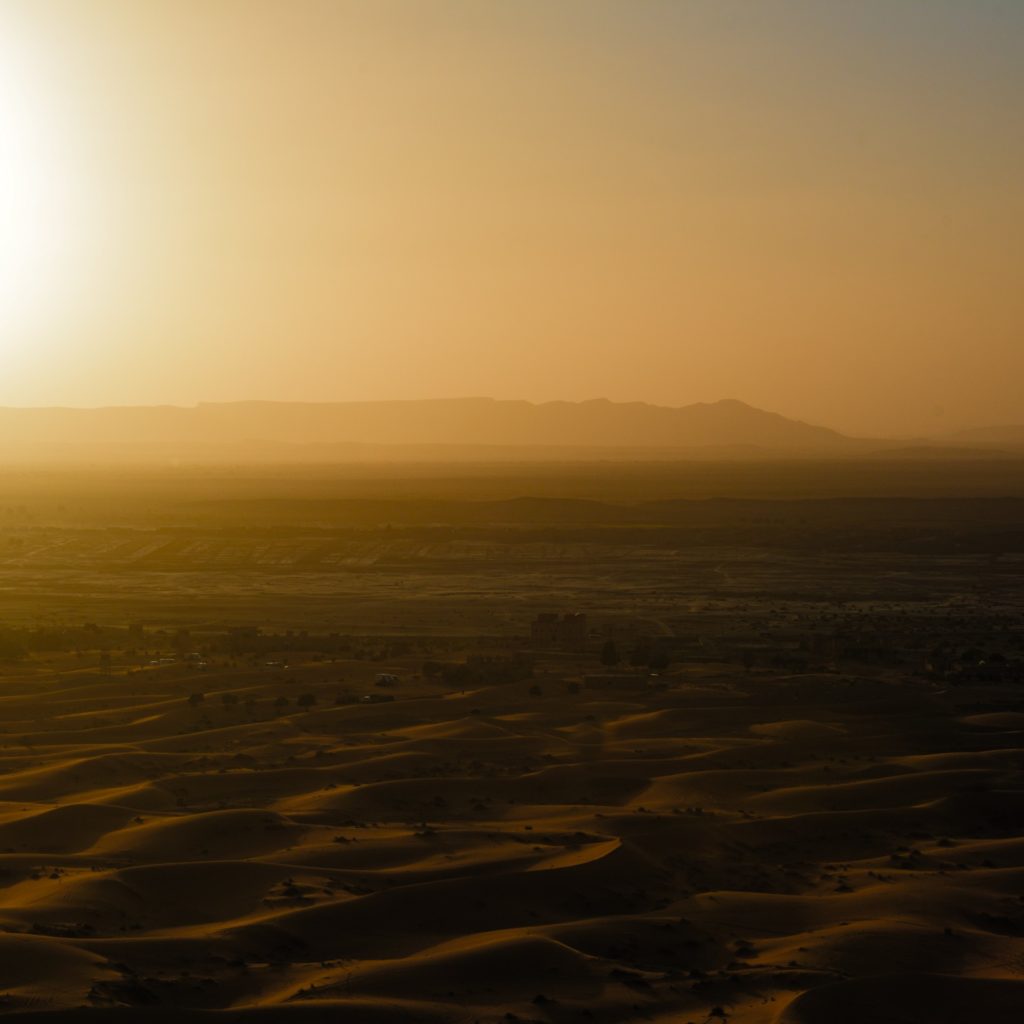
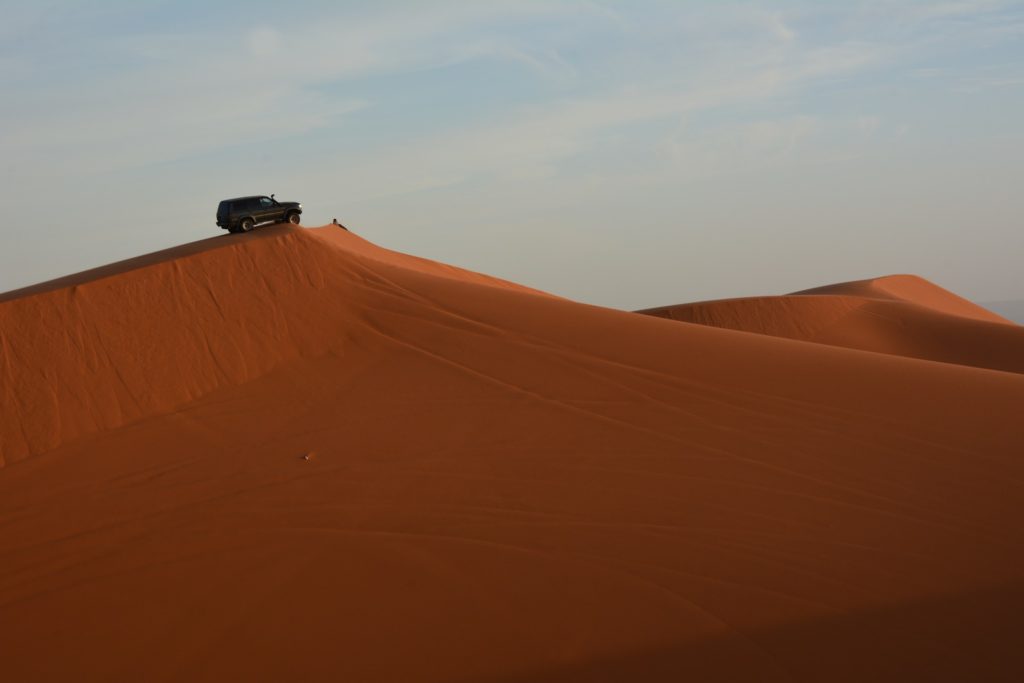
FRIDAY THE 13TH
The next morning we woke up early to catch the sunrise in the dunes. We walked a couple of hundred meters before sitting down on a medium-sized dune with a lovely view. Only a few minutes later the sun rose on the horizon. As it was a little dusty we could directly look at it as the fiery ball made its ascent. A couple of minutes in, we were joined by Yusuf who was wearing traditional Berber garb. We already knew that he didn’t scale the dune just to admire the sunset but we nonetheless used our new found tactic of just talking pleasantly with locals when they approach you. And indeed it was a pleasant chat without too much of the obvious white lies of an uncle exhibiting his carpets in the museum in Switzerland and the likes. We knew that right now it was the high season for tourism from Europe in the region but he told us that even in the scorching heat of summer people from Morocco would travel to Merzouga. Less for the amazing views on the never-ending sand dunes, but for treating arthritis by taking hot sand baths. Once we got up to leave he brought out the inevitable bag of fossils trying to sell. But he wasn’t too stubborn and understood that we neither had money with us, nothing to exchange nor the place in our van.
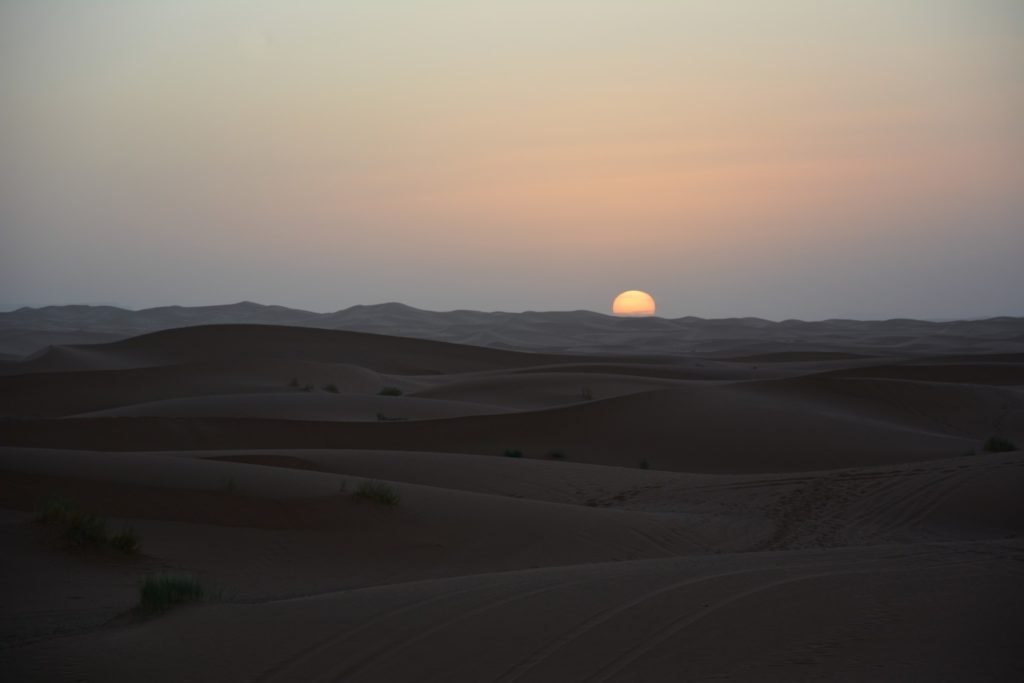
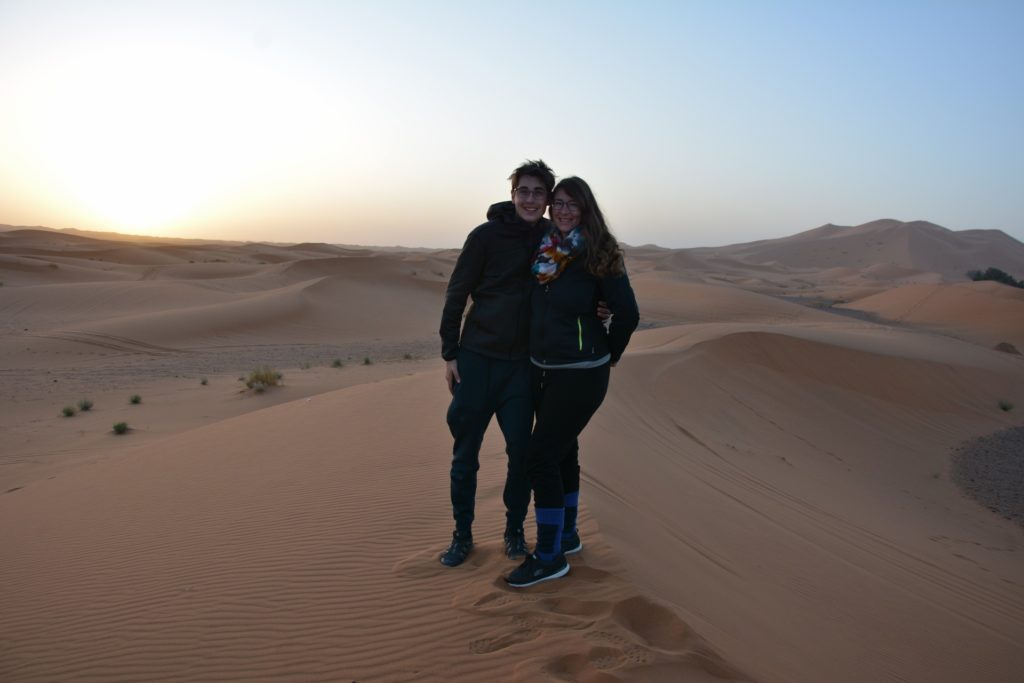

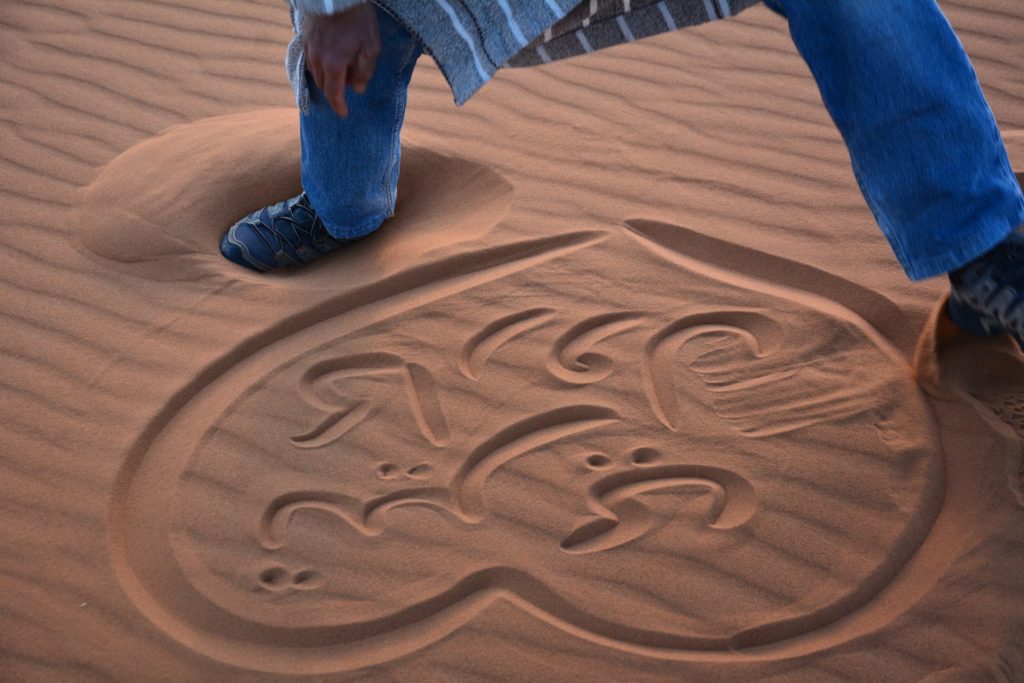
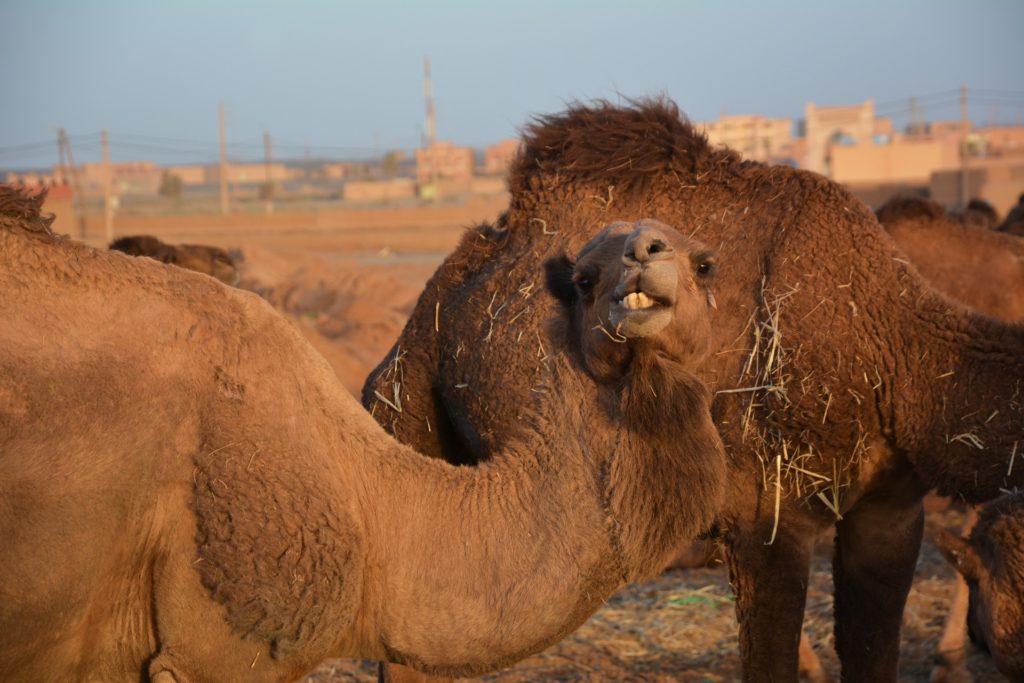
A good hour of getting ready later, we took off in our camper to explore the dunes further. We drove up north following the dunes until we eventually reached Erfoud. In the beginning, we were able to use our maps to find our way but they quickly became useless. No track or anything was in them while we clearly looked at tire marks and even some tracks outlined with white stones. We settled on navigating the old way by keeping north and looking for possible paths around the dunes and rocks. At times we could see for miles around the flat rock bed and neither spot a human nor any signs of human development. In the beginning, we crossed paths with other cars, motorcycles and camels, but only a few minutes in we were all by ourselves. The abandoned desert and the never-ending views are amazing and overwhelming.
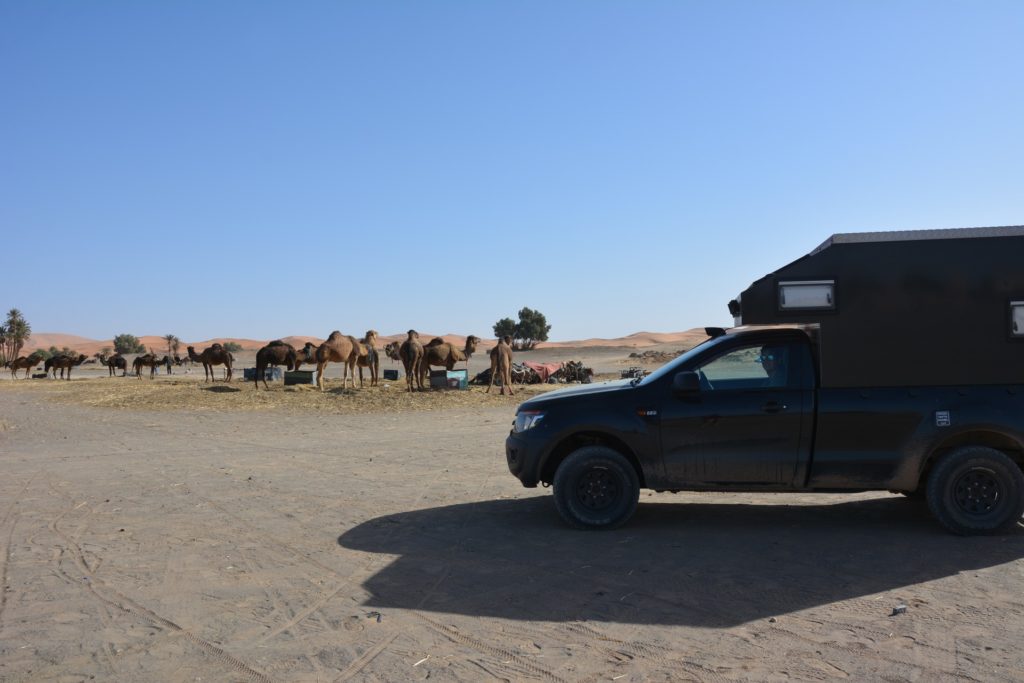
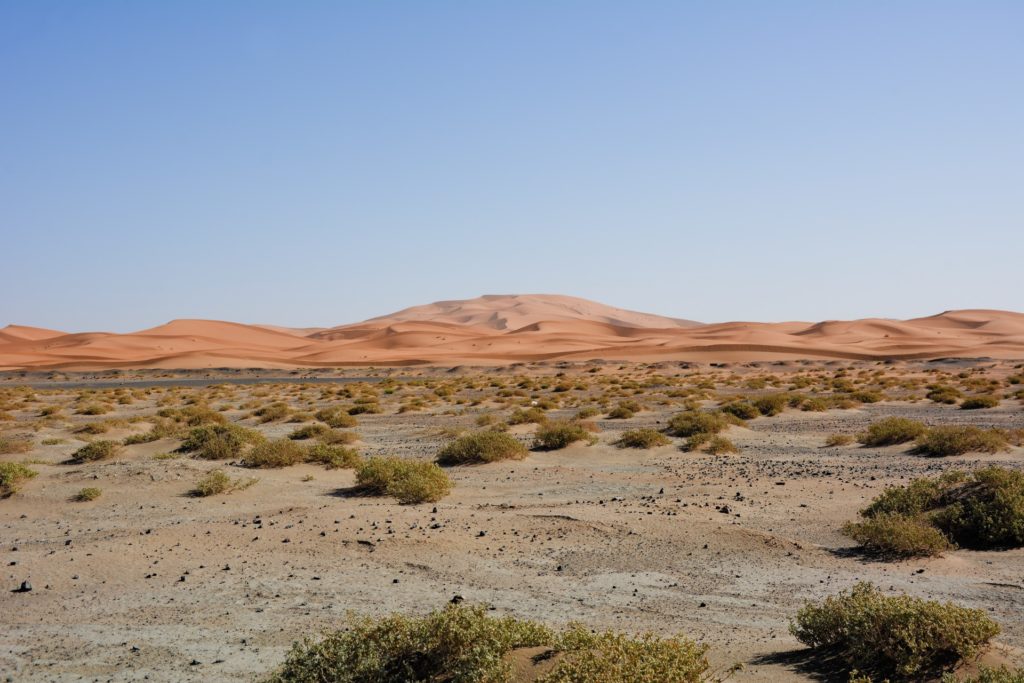
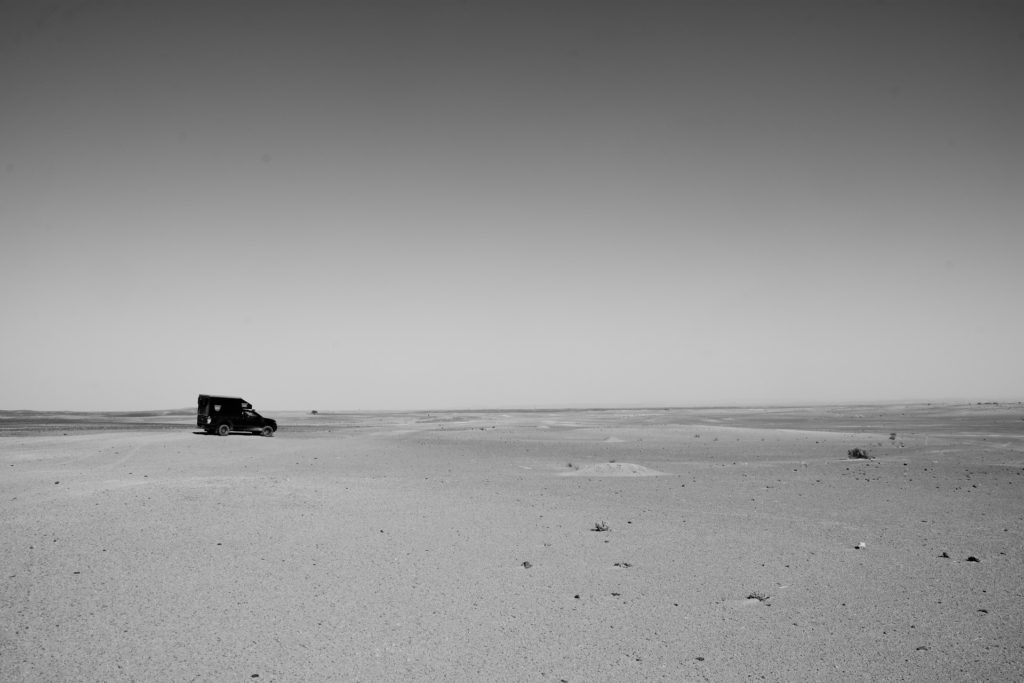
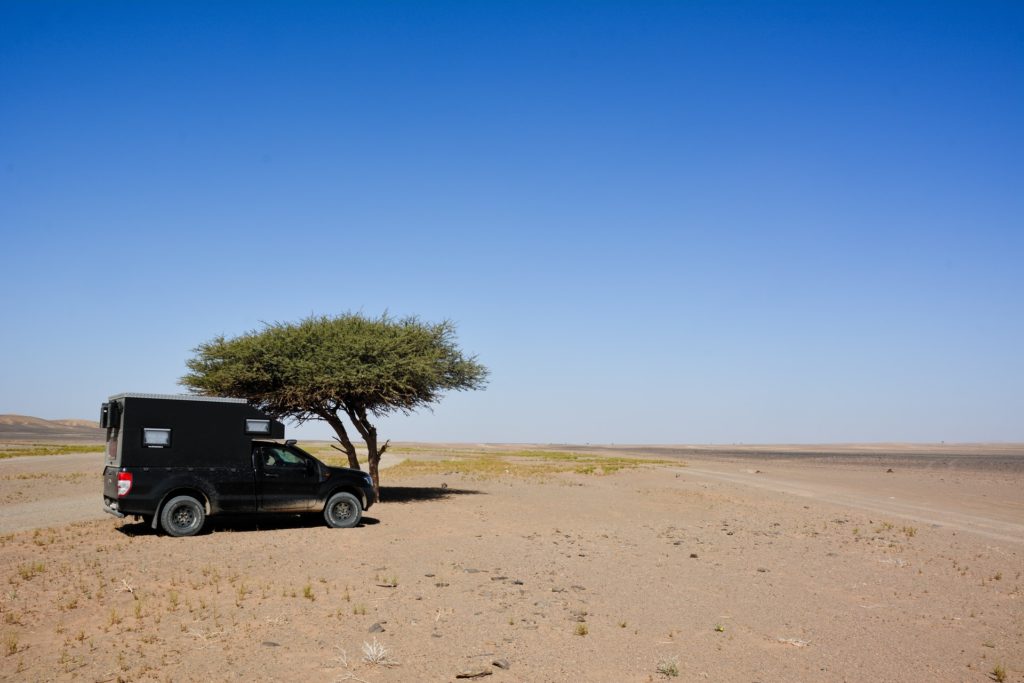
Erfoud was much livelier than the day before. People were riding their bikes, vendors selling their merchandise and we had to stop for a couple of minutes to let a Muslim procession pass through. Another drive-in orange juice later we passed through barren desert land only interrupted by the occasional oasis or small town. We had some tajine and brochette along the way, before passing some strange looking gravel hills alongside the road. From our guide book, we knew that these are the maintenance shafts for the foggaras which are subterranean channels. These channels, which are no longer in use, were dug by slaves and transported water with less salt from the mountains further away. We did skip a visit down into the channels but the sheer size and even the thought of digging them impressed us quite a bit.
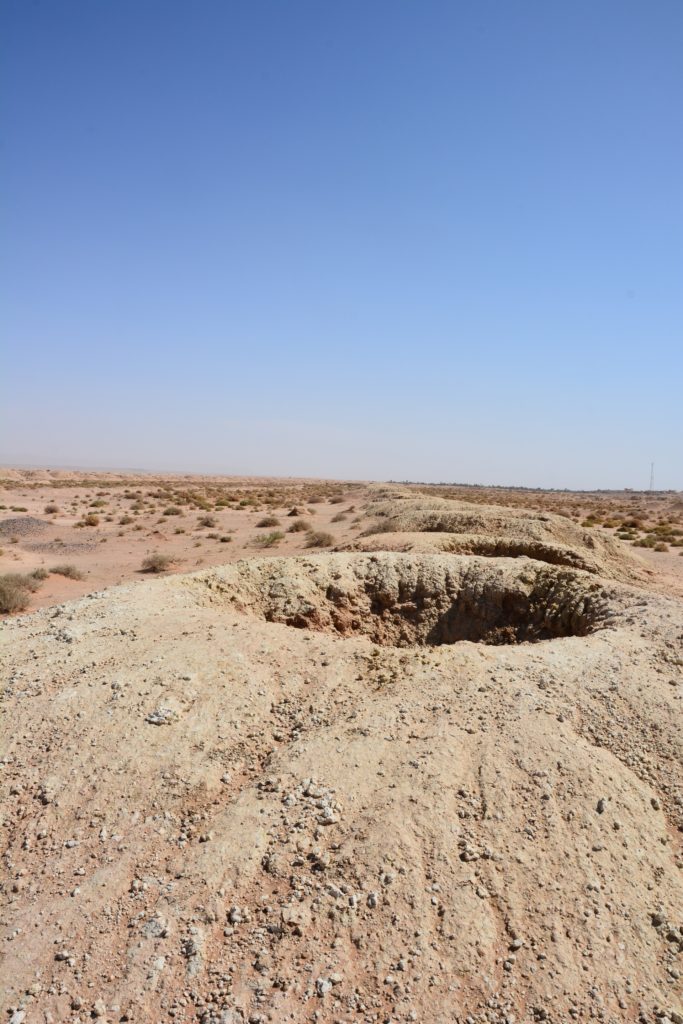
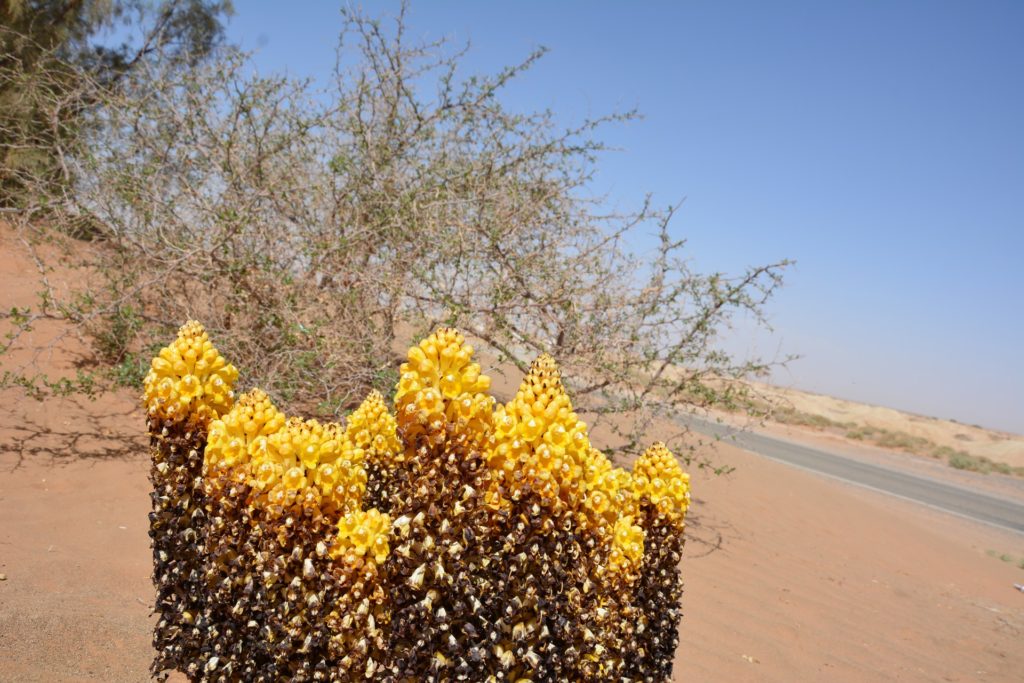
A while later we reached the city of Tinghir, the gate to the Todrha gorge. We only wanted to refuel and take a quick picture of the Kasbah, when Thierry noticed a hissing sound coming from our back tire. Friday the 13th has struck and we got our first puncture on this trip. Taking our bushmechanic-course skills in action we successfully lifted the camper with the car jack, took away the tire and filled the puncture with vulcanizing gum. In the meanwhile, a young passenger stopped to help out of generosity and later left when he had to go on a date. After reattaching the tire the compressor failed to do its job. We were in the middle of figuring out how to get to the spare tire when Hassan joined us. He had a car and offered to take Thierry and the deflated tire to the next compressor. So we detached it again and Thierry took off with Hassan, while I was guarding the still jacked up car and read a book.
Only the third gas station had a functioning air station (one was simply not working, the other even lacked a hose – welcome to Morocco ;-)). There they figured out, that there was still some air leaking from the puncture, so they went off to search a professional tire fixer, which isn’t that easy on a Friday. After a shop had only gear to fix big truck tires they finally found a guy who could help. After a quick glance, he let them know that probably the tire couldn’t be fixed as the small bulge was indicating some structural damage and the remaining leak was not subject to bad work on our side. After removing the tire from the rim he confirmed his suspicion but offered to fix the tire to an inflatable state which should hold around 50km. 50 Dirham later Thierry returned to the car and we drove to a nearby camping place to stay the night and start the search for a new offroad tire the next morning.
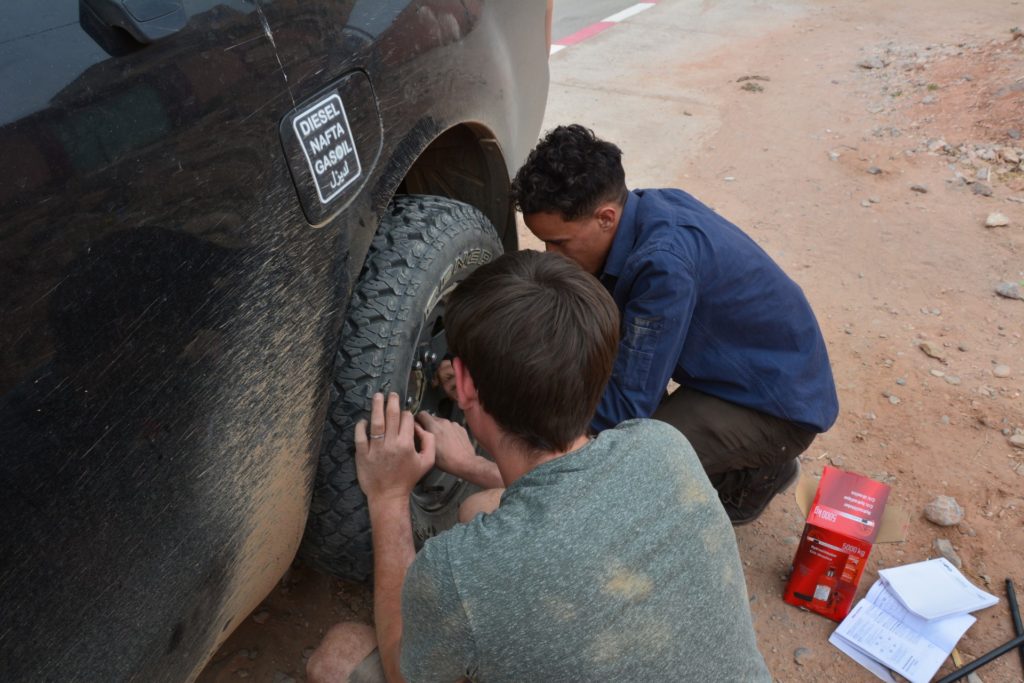
Exactly at 9 o’clock, we met with Hassan to search for a new tire. He led us to a bigger garage. They would have had a tire of the same size but from a different brand. For better safety, we would have needed at least the same tires on the same axis. Unfortunately, they only had one piece left. Thus, we changed to our spare tire and postponed the search for a replacement until Marrakesh. Geared with 3 offroad and 1 normal tire we decided to be on the safe side and avoid offroad tracks for a while. As a result, instead of driving the circle starting at the Todrhas gorge to the Dades gorge we skipped the part in the middle connecting those sights because the road would be in a rough state. We first drove to the Todrhas gorge and then back to the main road up to Boumalne for a quick lunch stop. During lunch, we witnessed the meat delivery including blood dripping everywhere and a cow’s head still with fur and horns. Just after Boumalne, we took the detour to the Dades gorge. I think the pictures will tell you all there is to say about this beauty.


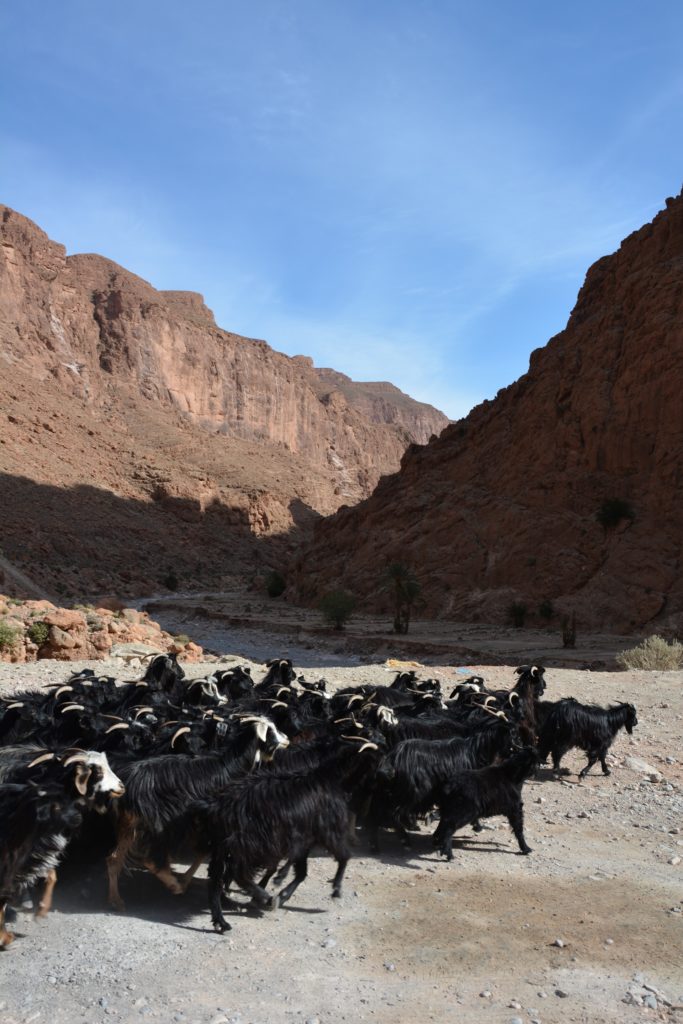
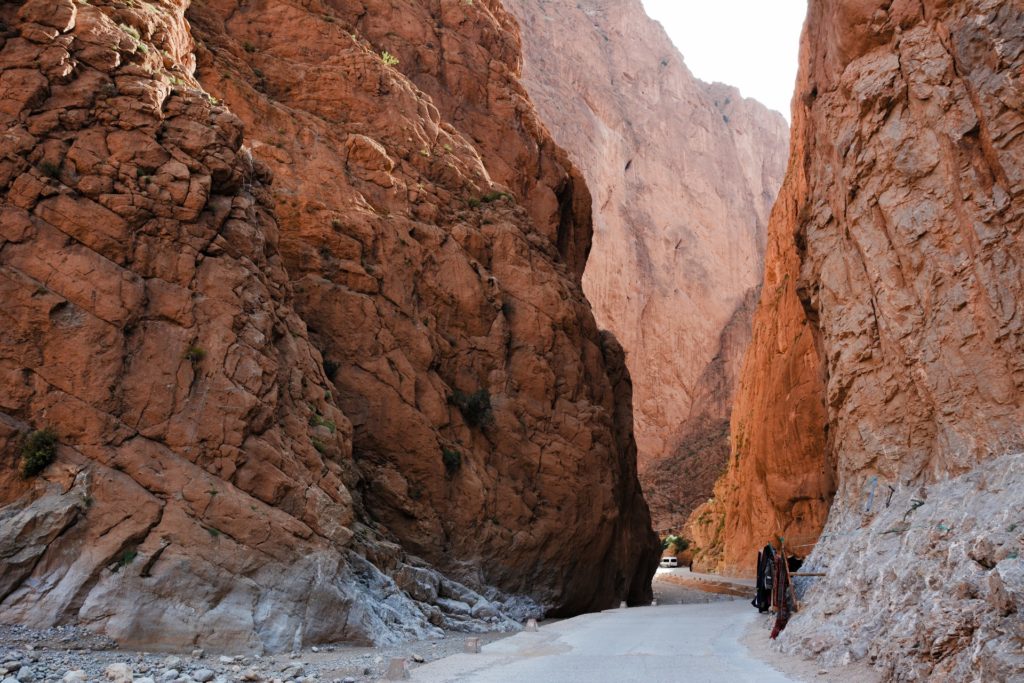
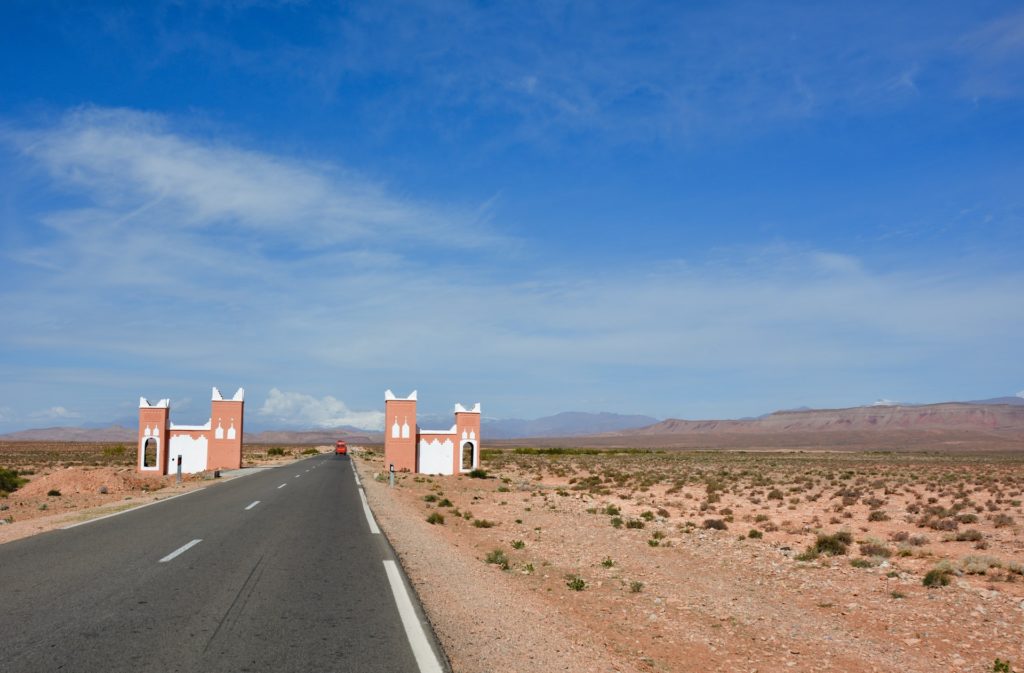
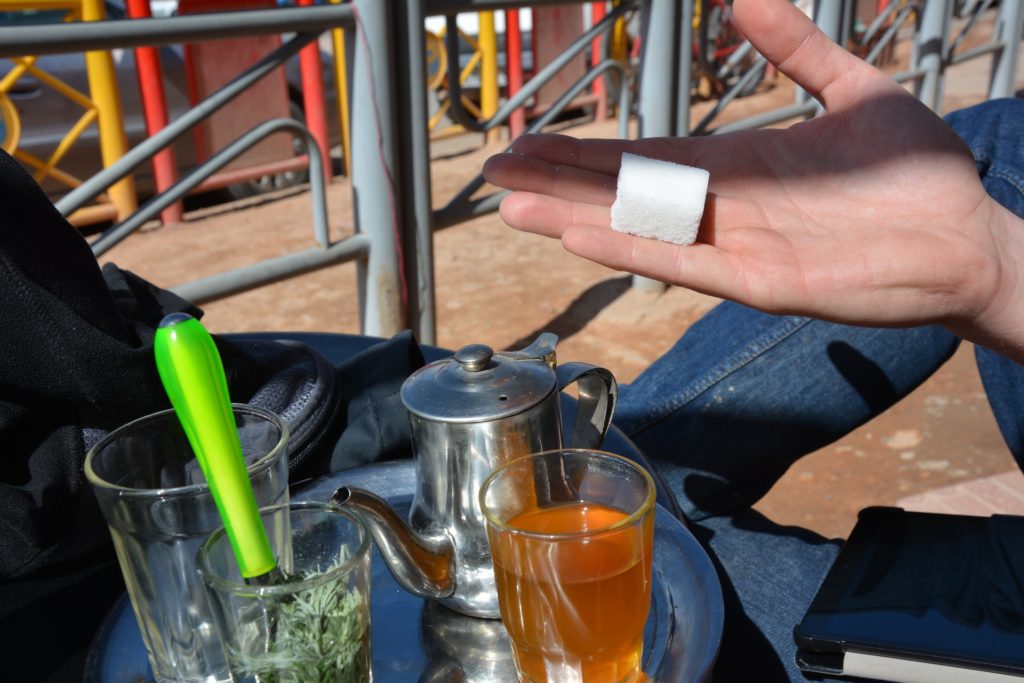

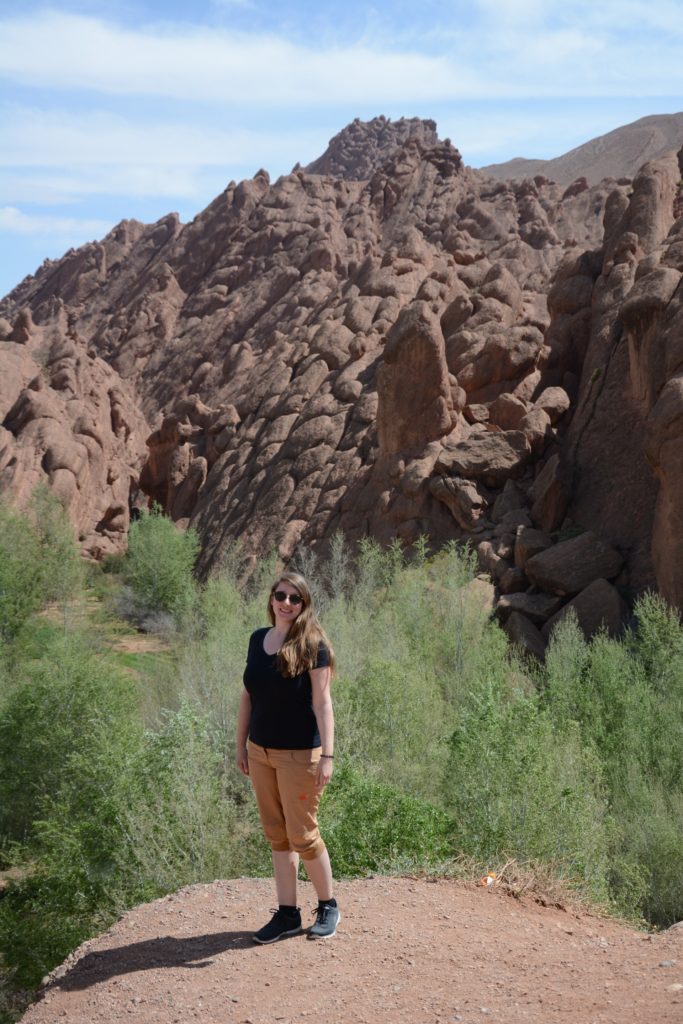
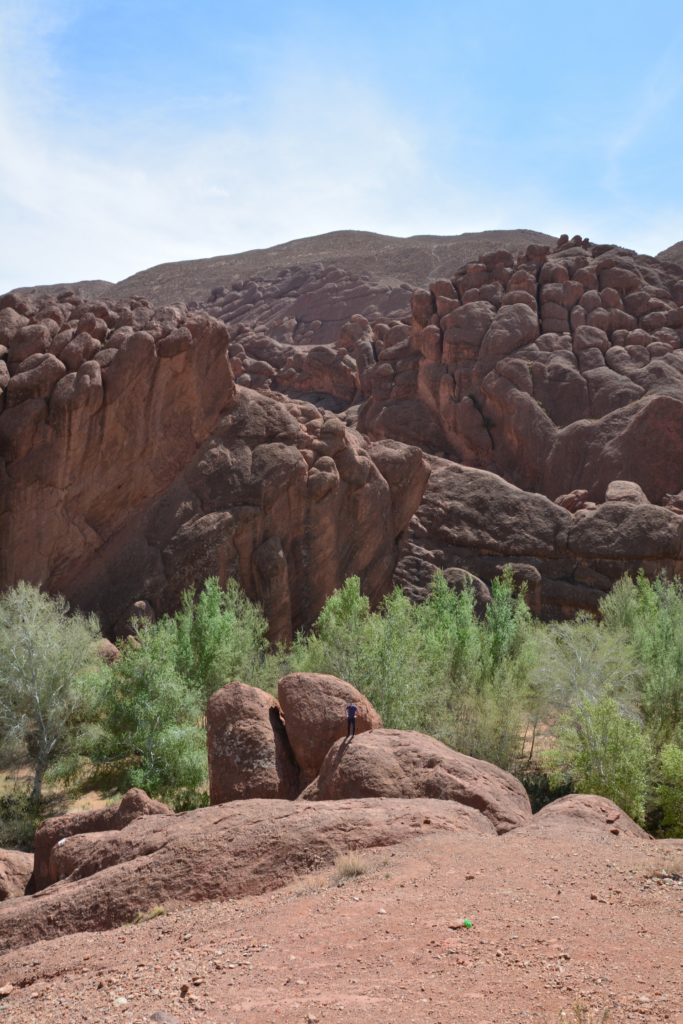
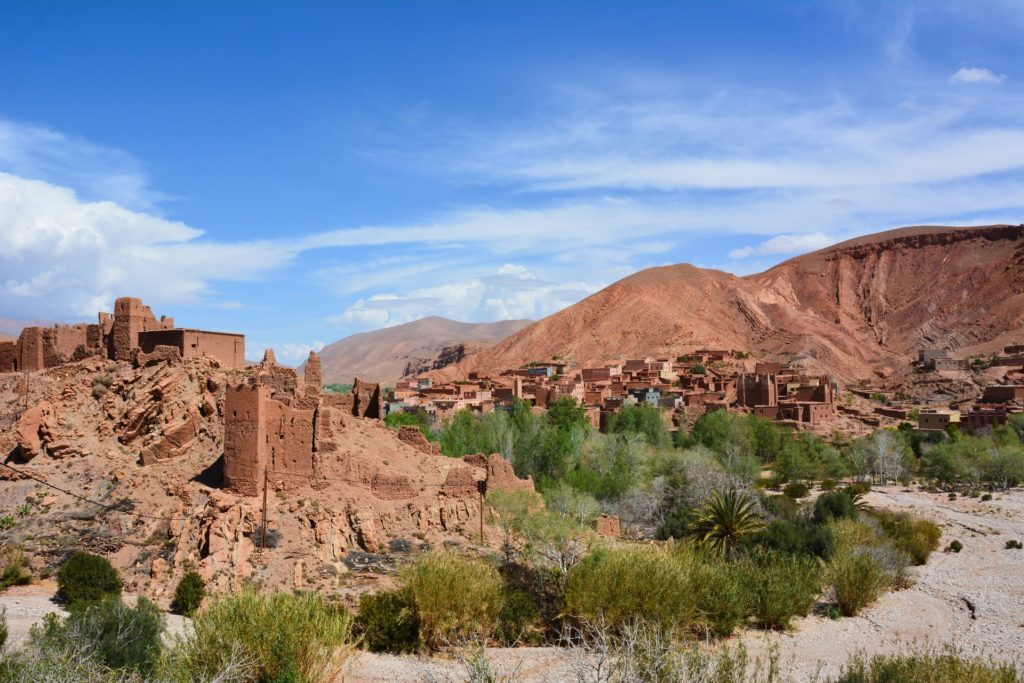
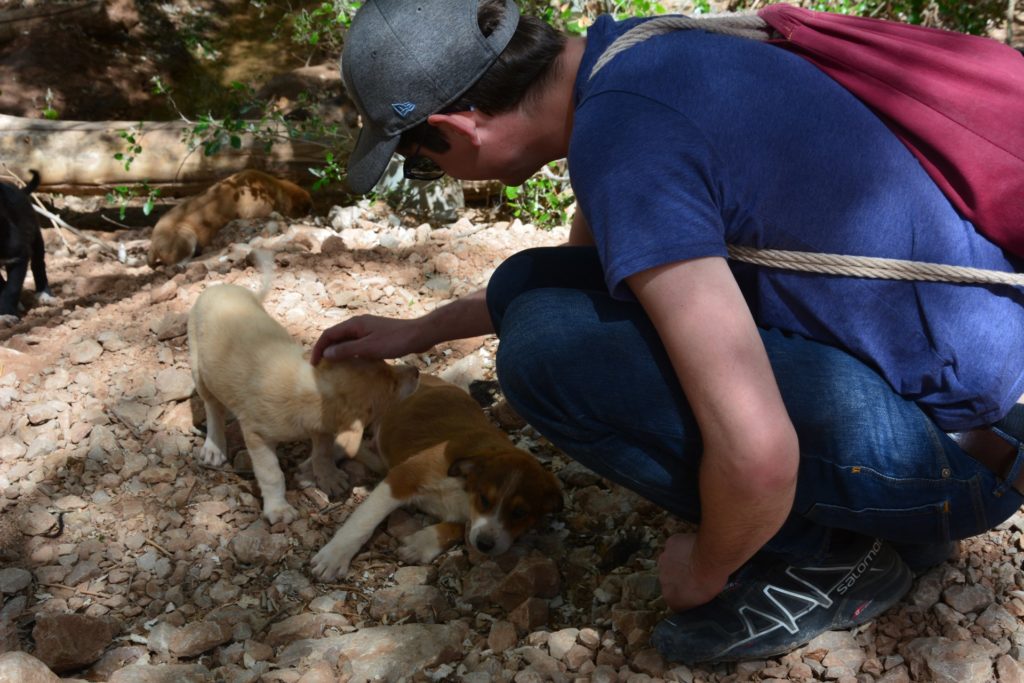
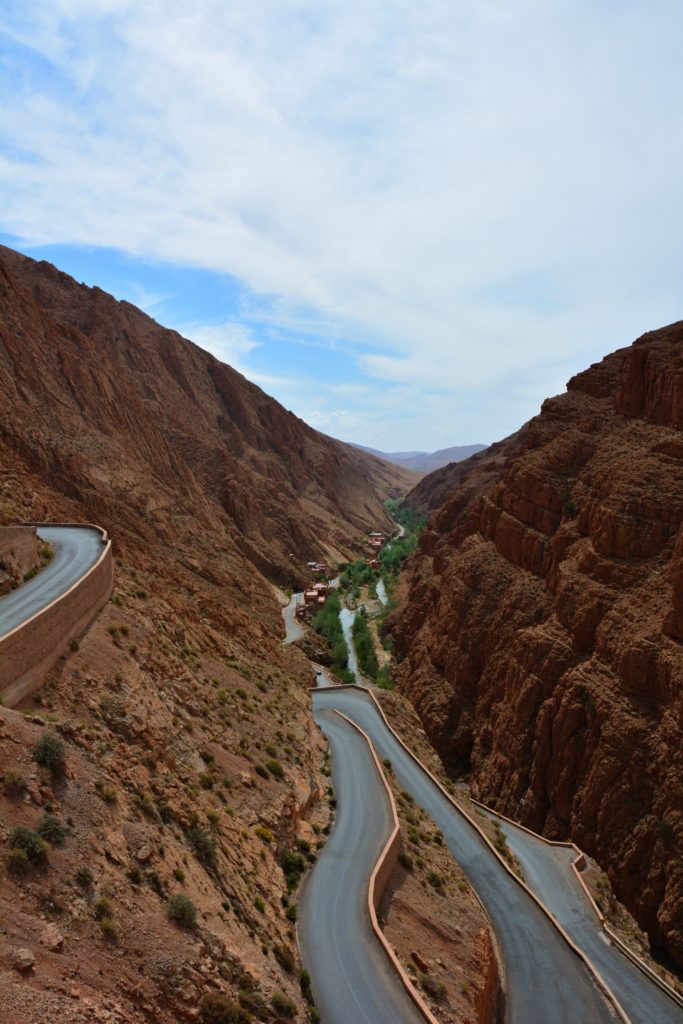
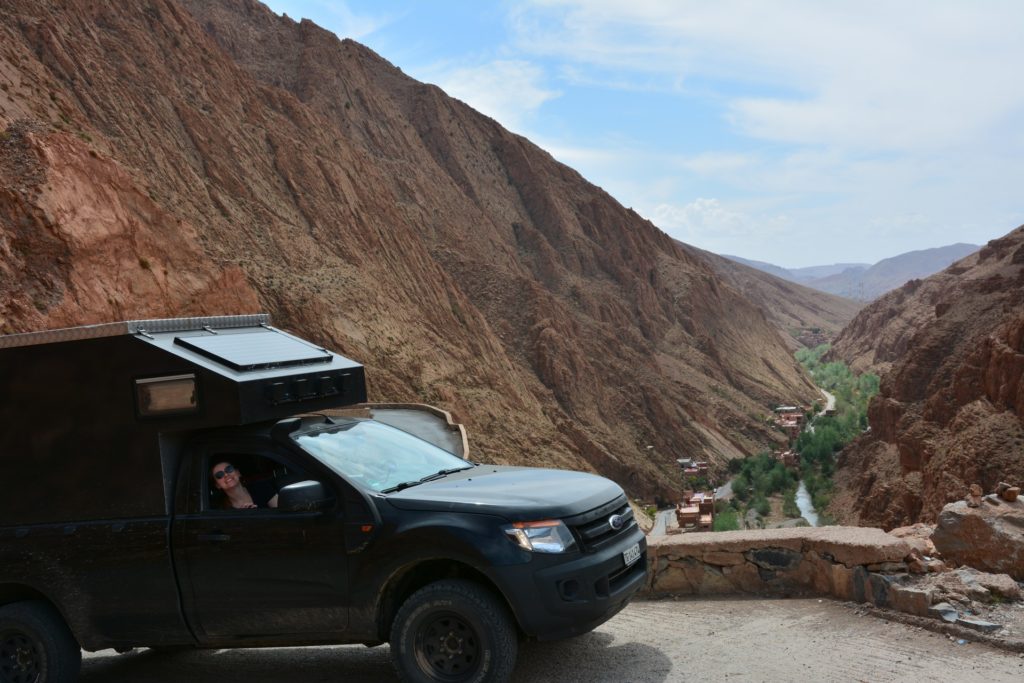
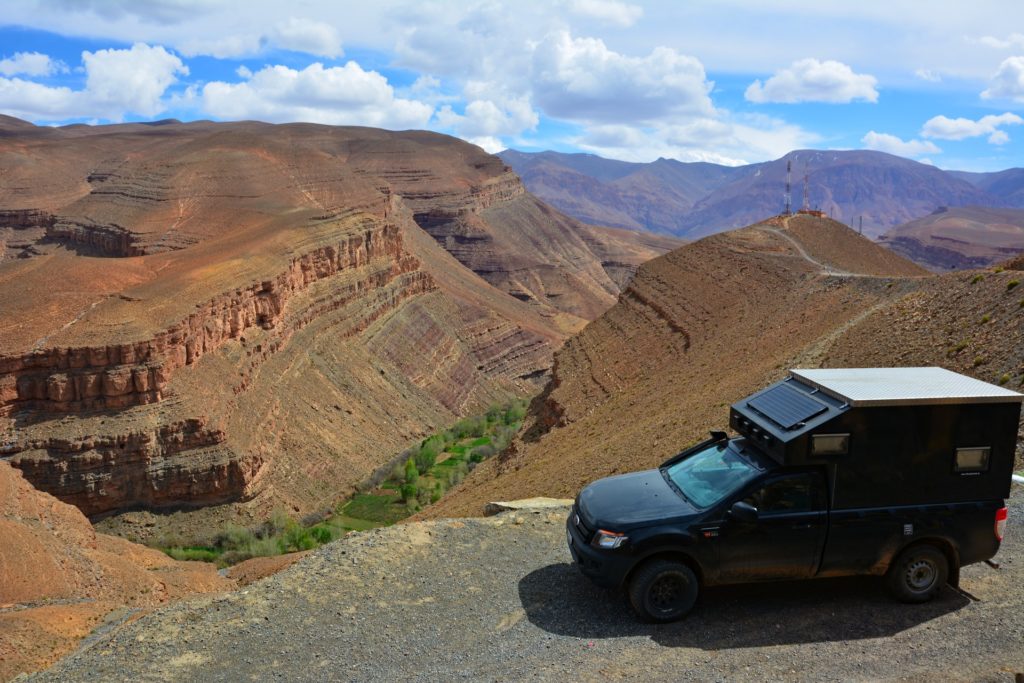

After driving the almost 50 kilometres of windy roads back to Boumalne we headed to the lake just before Ouarzazate. On our way the sky became dark and it started to rain in the desert. Quite a surreal experience.
To reach our camping spot we had to drive a few kilometres on a dirt track but we were awarded a lovely view, grazing camels and a spot for Thierry’s fishing attempts.

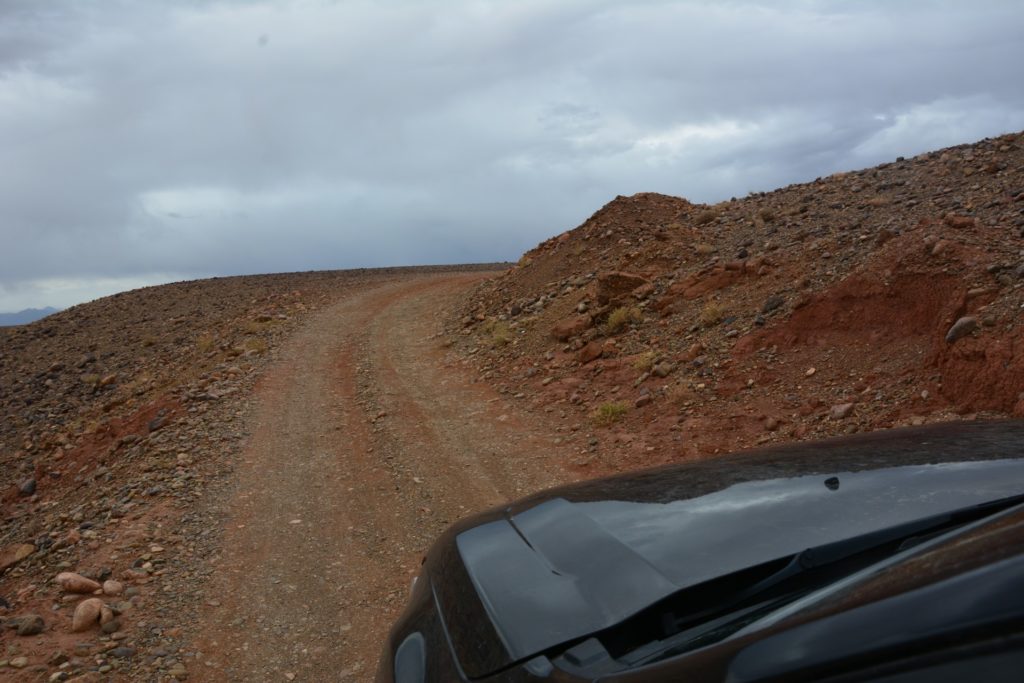
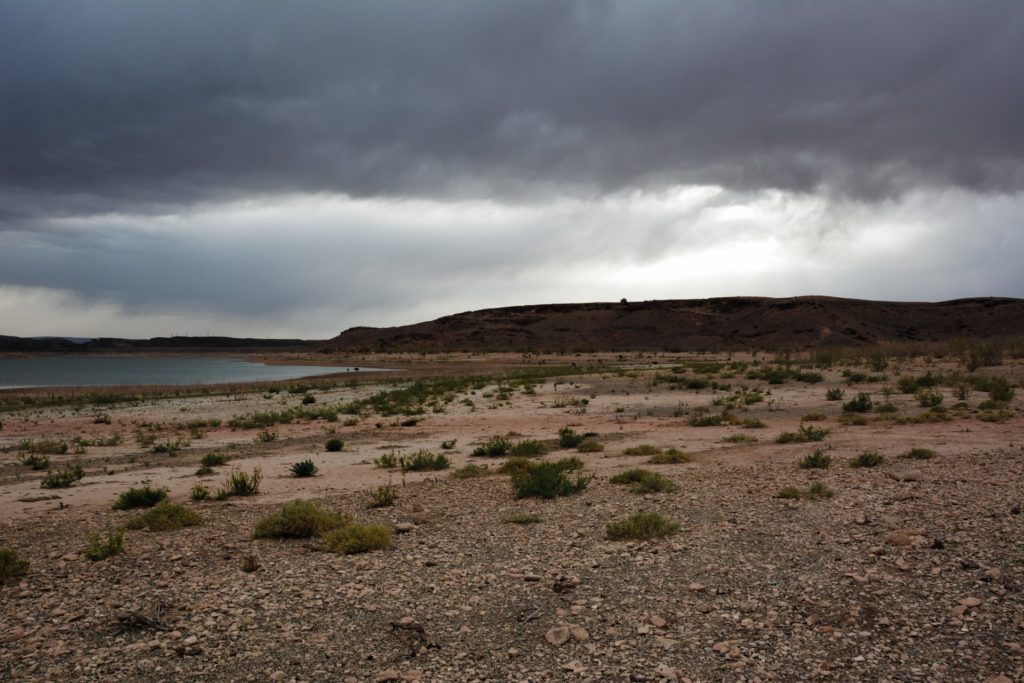
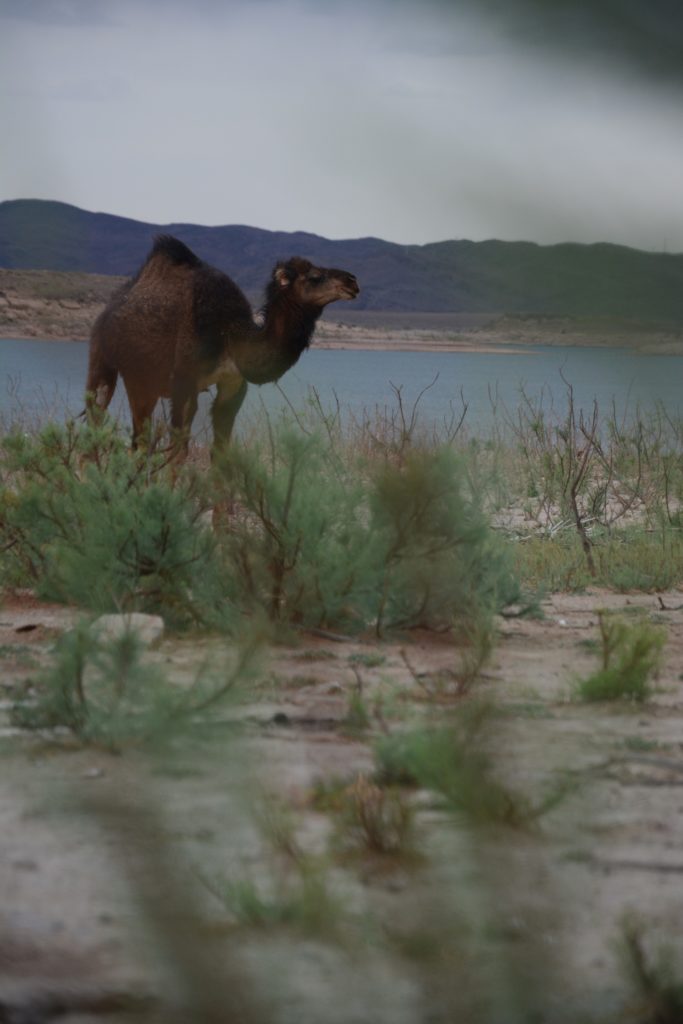
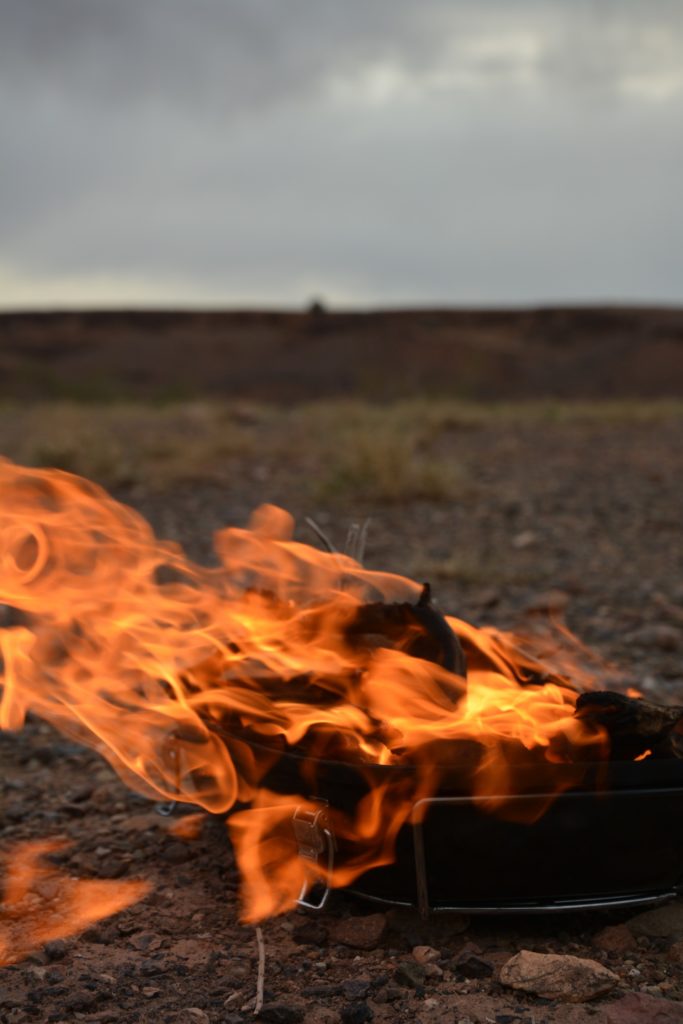
CROSSING A PASS BACK INTO FERTILE LANDS
From Ouarzazate, we took the road via Ait Benhaddou. This village is worth a stop because of its multiple Kasbahs that are built next to each other resulting in a large complex in a scenic landscape. Together with the film studios in Ouarzazate, it is a popular spot for filming desert scenes like in Game of Thrones, Gladiator and Asterix and Kleopatra.
Driving on through breathtaking mountains and canyons we then made our way to the Tizi n’Tichka, a pass on 2260m. Taking the turning and twisting roads back down it became evident that the government at least plans to improve the roads although they didn’t manage to beat the heavy rains and rockfalls all the way.
So we now made our way to Marrakech, the last of the imperial cities for us to visit next week.
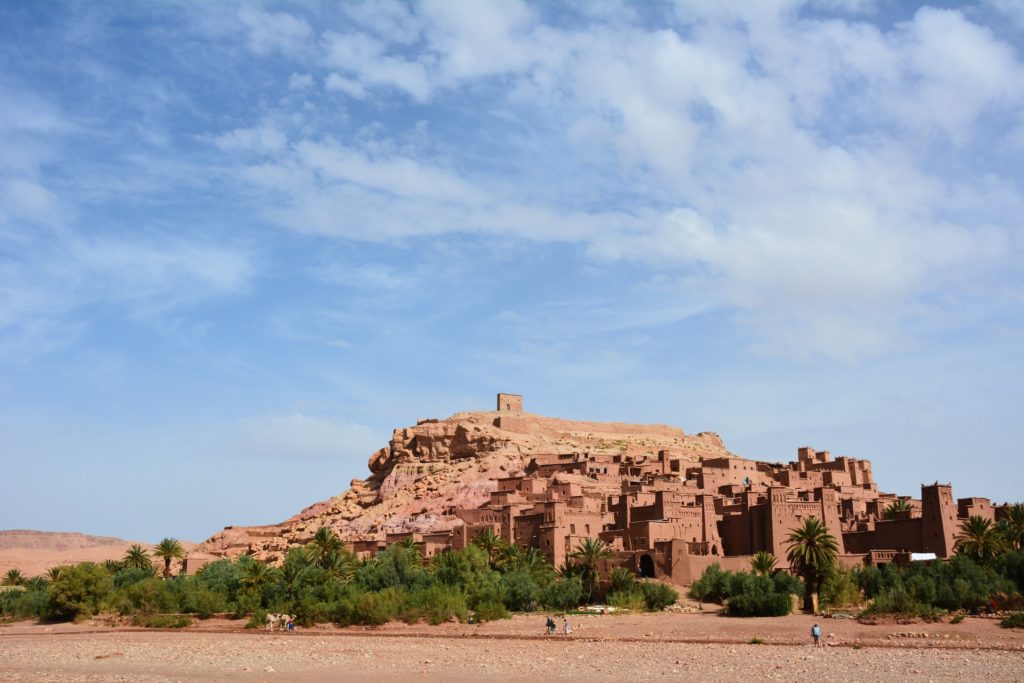
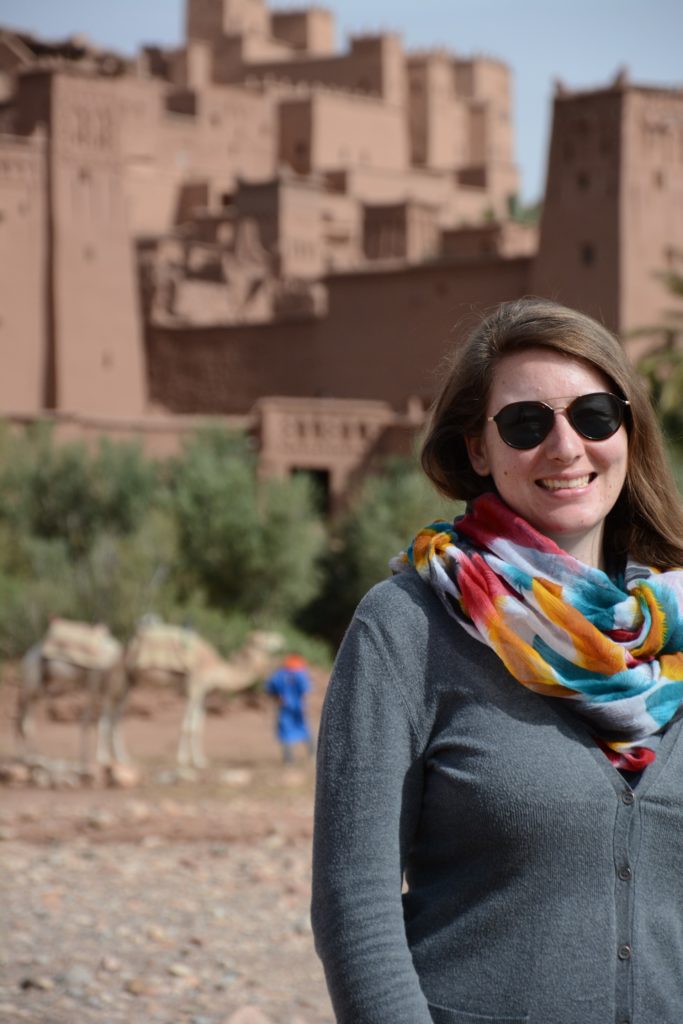
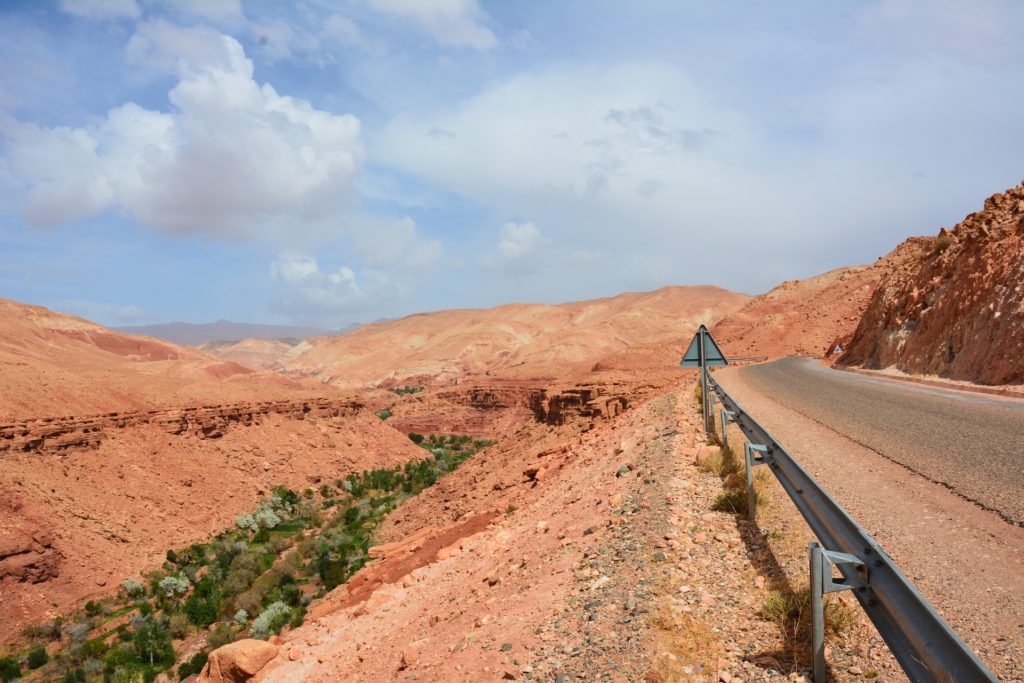
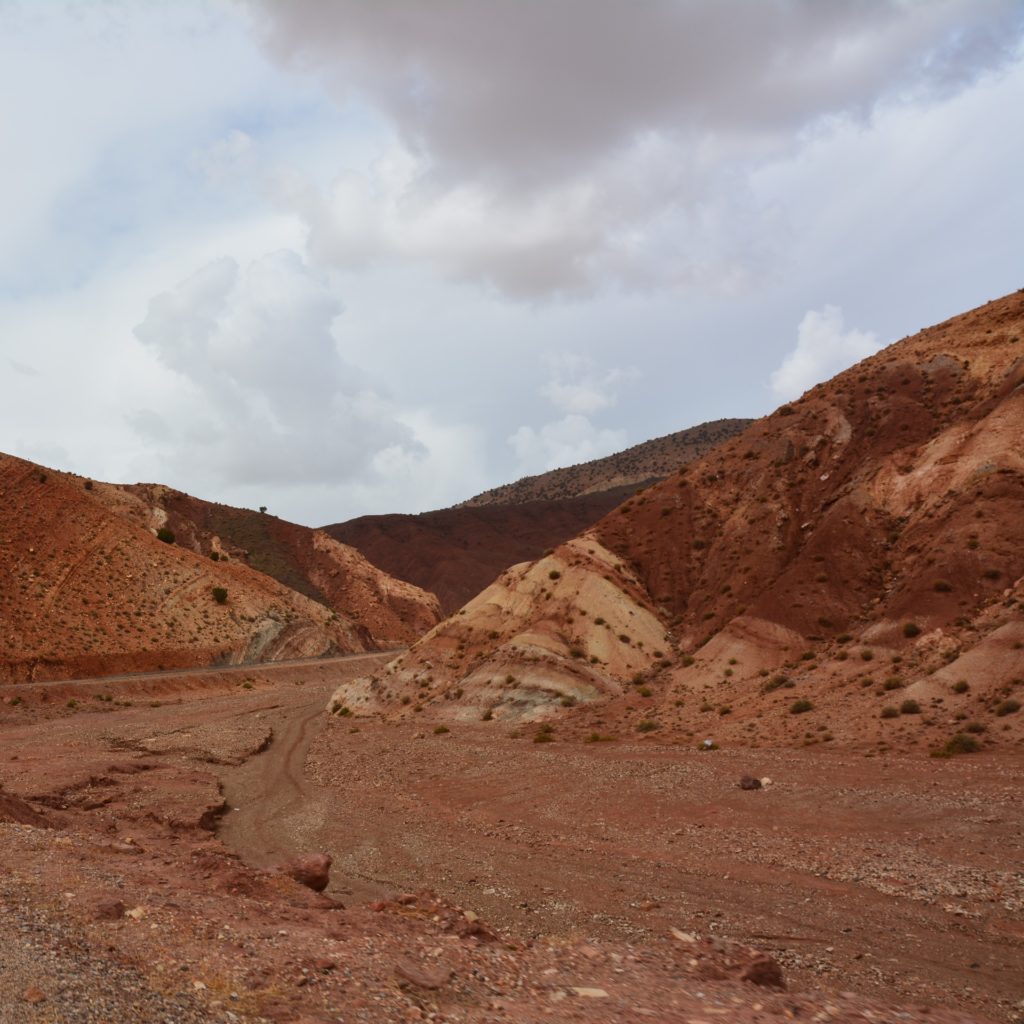
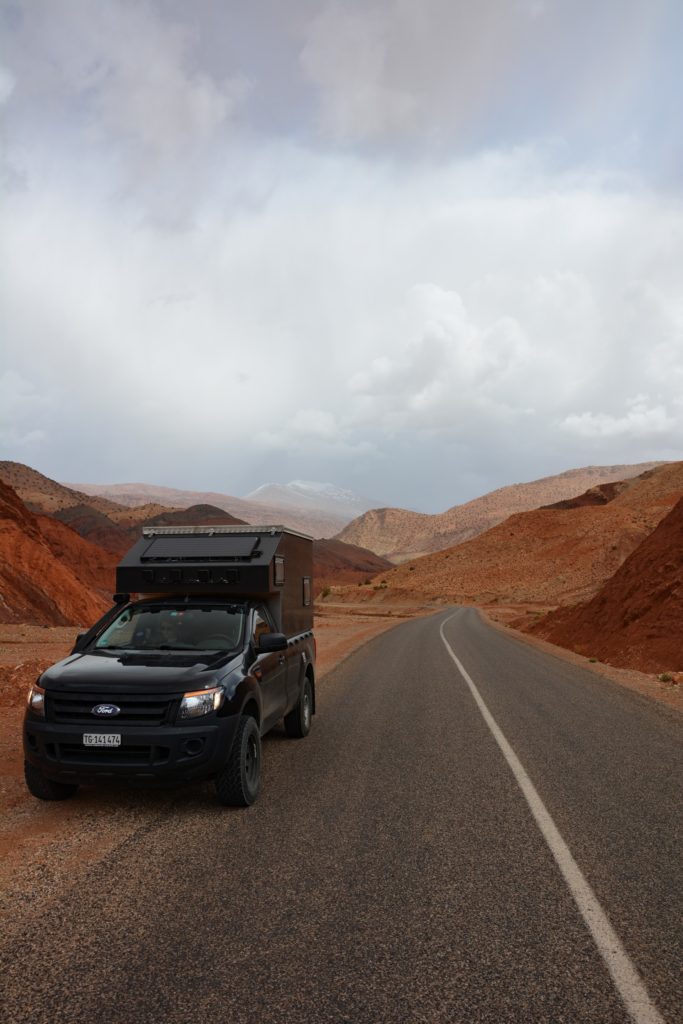
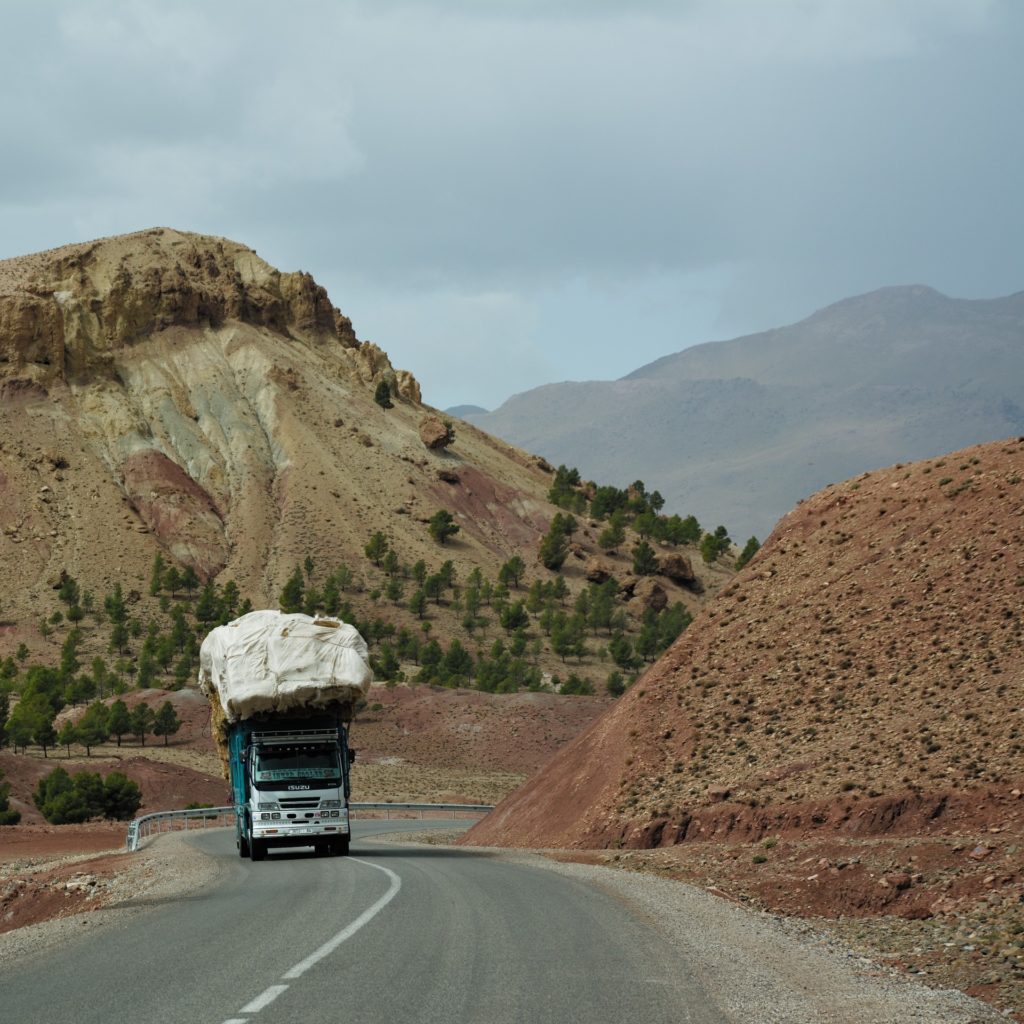
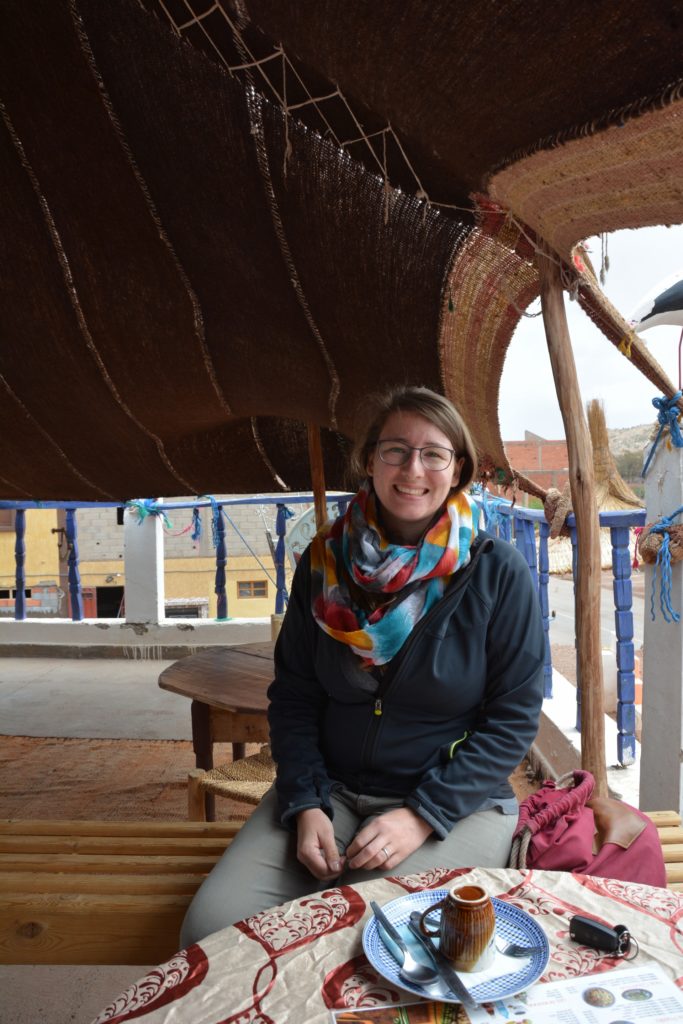
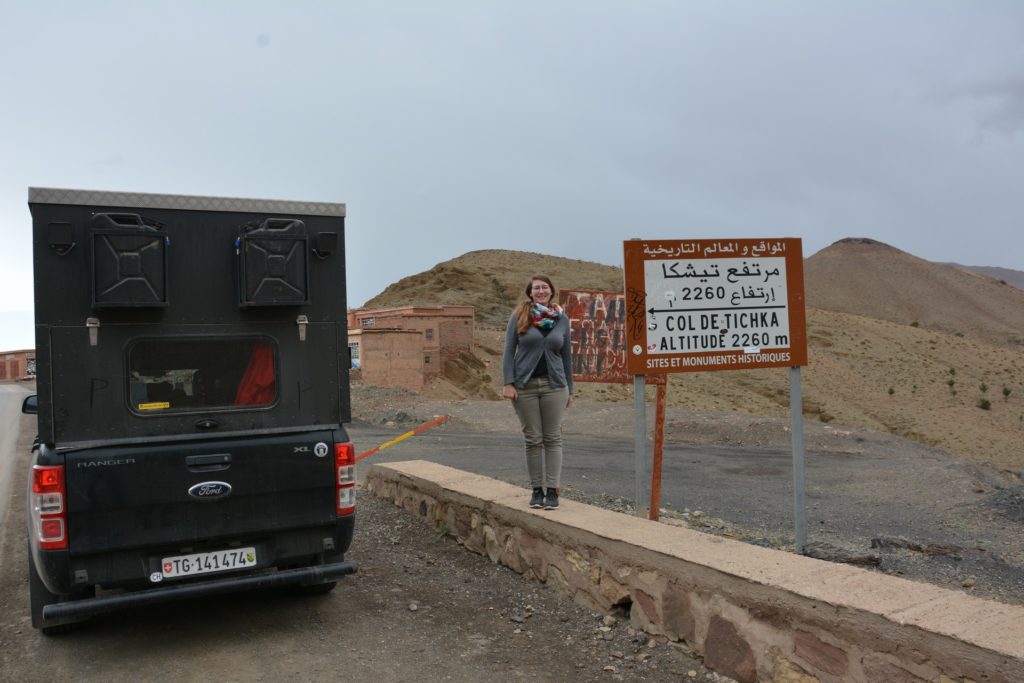
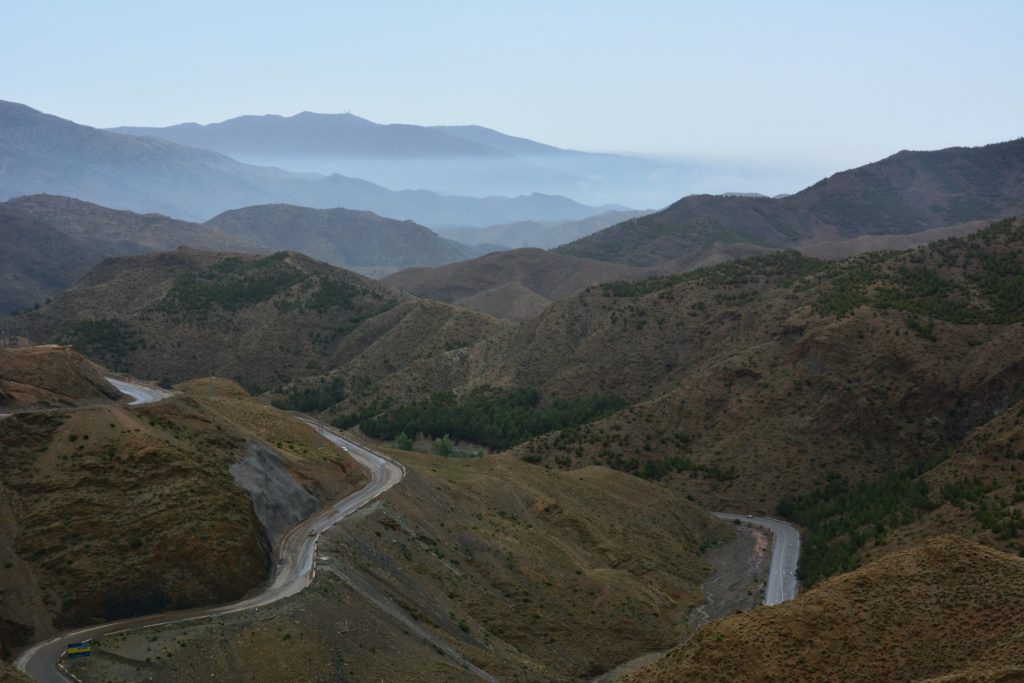
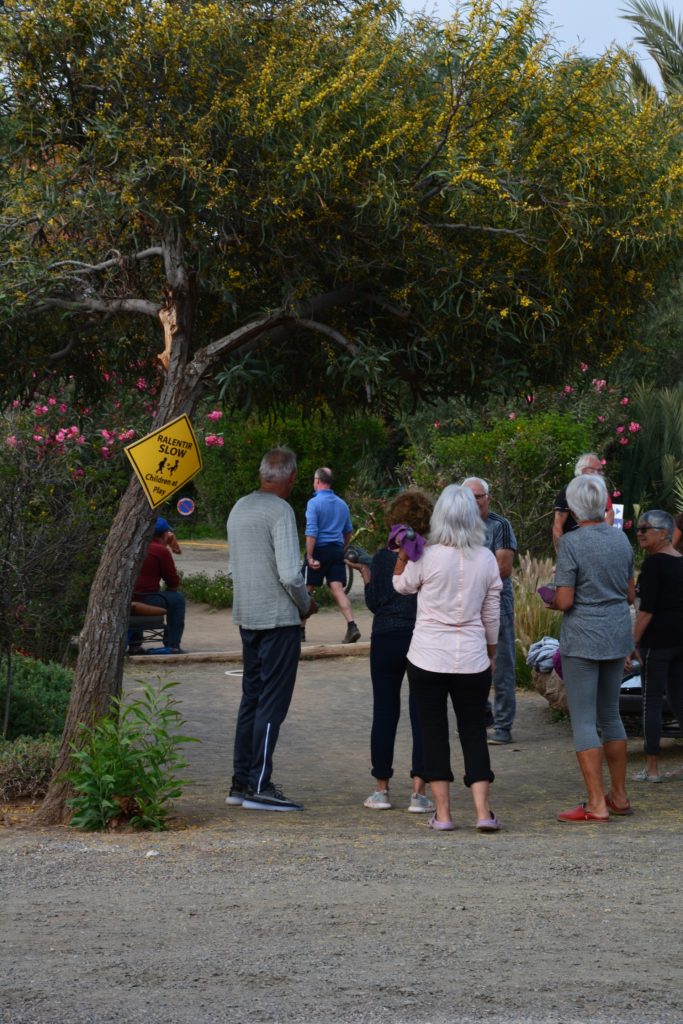
CONCLUSION
We feel like we transitioned from vacationers to travellers this week. Our pace got a little bit slower and the daily routines with the car have been further established. Morocco has treated us very well so far and the scenery is amazing. We got used to the usual tourist touts and are pleasantly surprised how quickly most accept a no. We got used to hearing the daily prayer calls and feel like we get a better picture of Moroccan live, without claiming anything beyond a first insight. Most of the time Thierry gets approached by strangers and direct addresses of me, especially by men, have become rare. Most of the time they ask Thierry whether he would like to buy a gift for his Gazelle or his Fatima, which I find a funny way to prevent the potential minefield of relationship status.
The first car problems remain a topic to be dealt with in the next days. Hopefully, Marrakech treats us well. We closely monitor the situation with the Corona Virus as Morocco has closed most of its borders, already affecting a few travellers we met. We’ll see if it becomes a bigger issue for our plan further down the road.
FACTS AND FIGURES
- Kilometres: 1393
- Offered fossils and carpets: 156’887
- Destroyed tires: 1
- Replacement tires found: 0

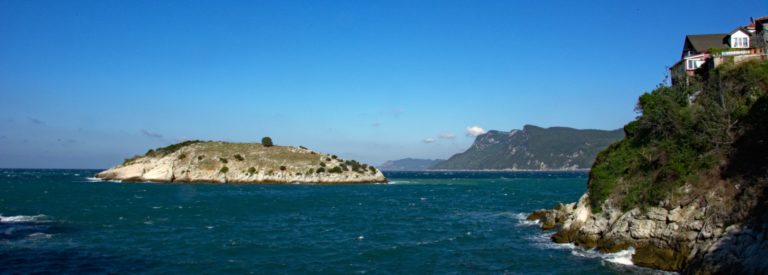
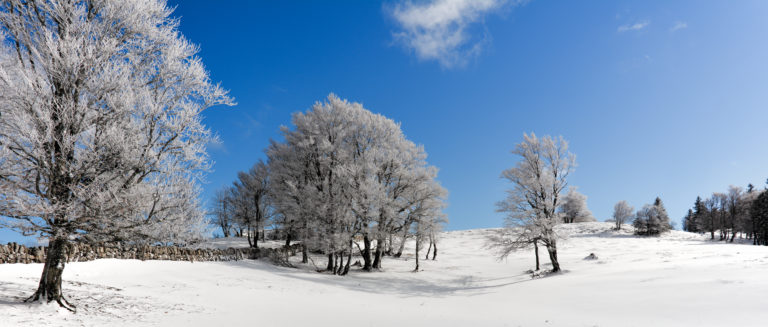

Interessing stories and beatiful pictures. It brings beak my memories to Morocco in 2010. Good luck for your oncoming trip!